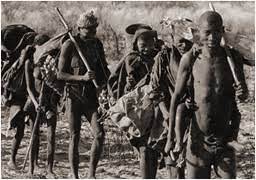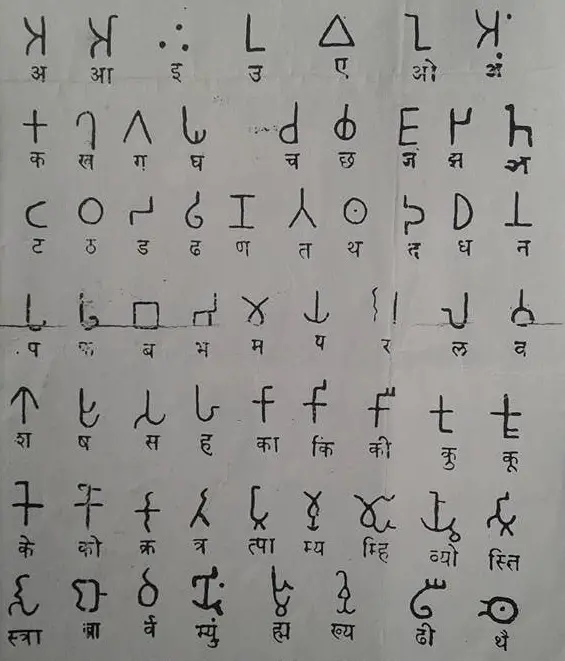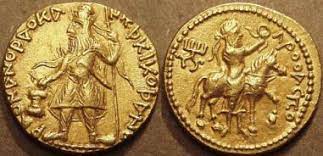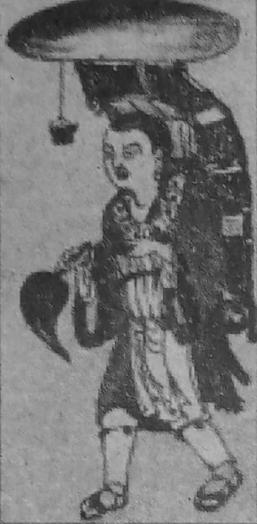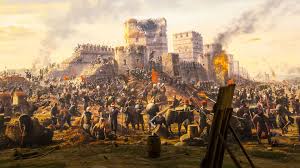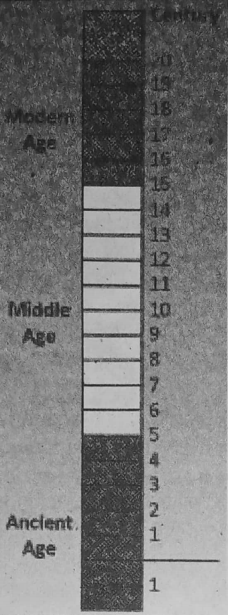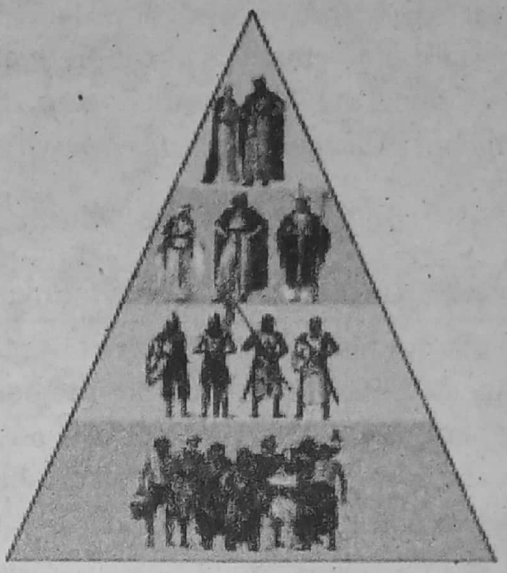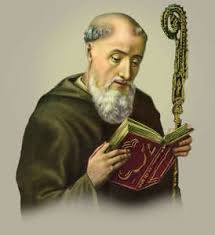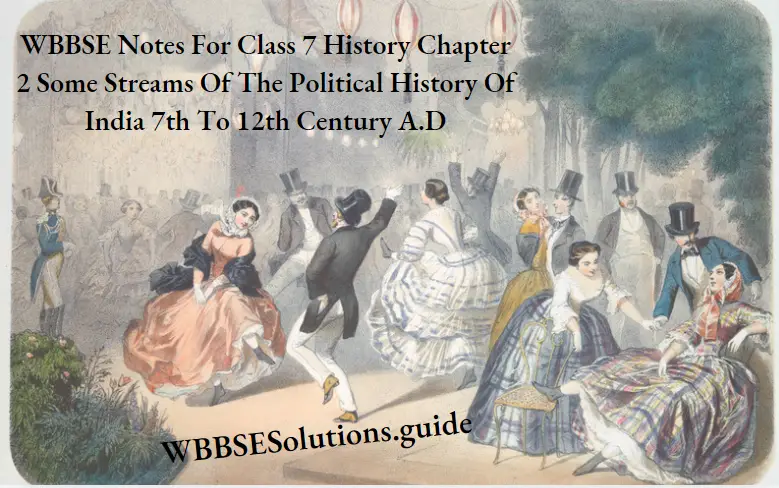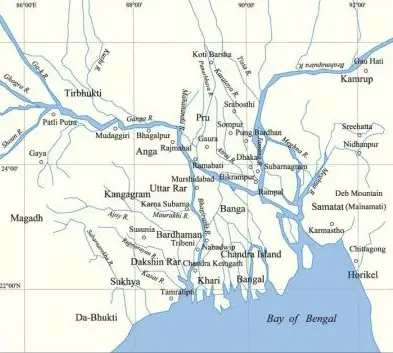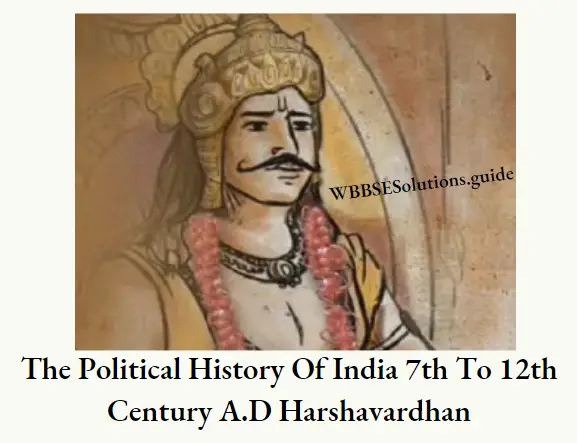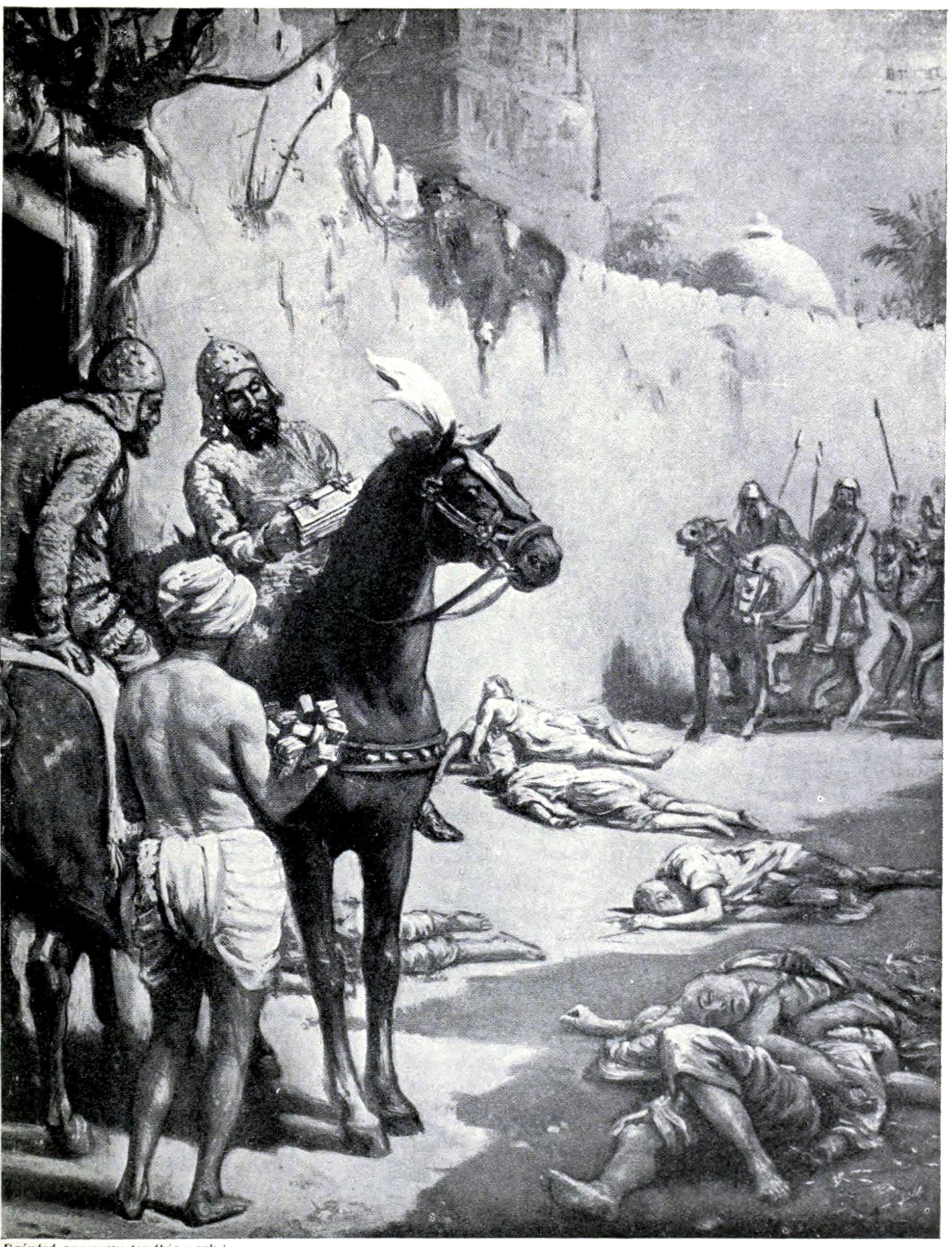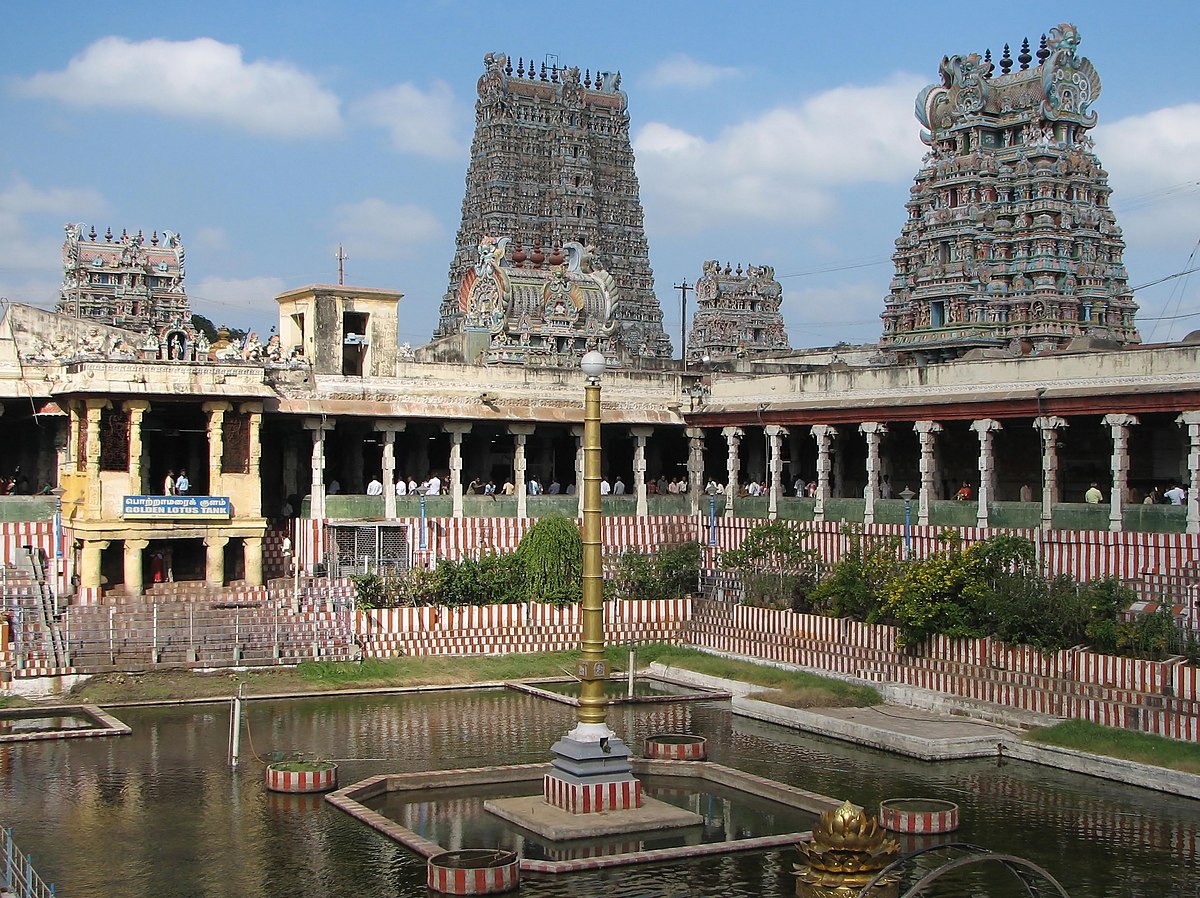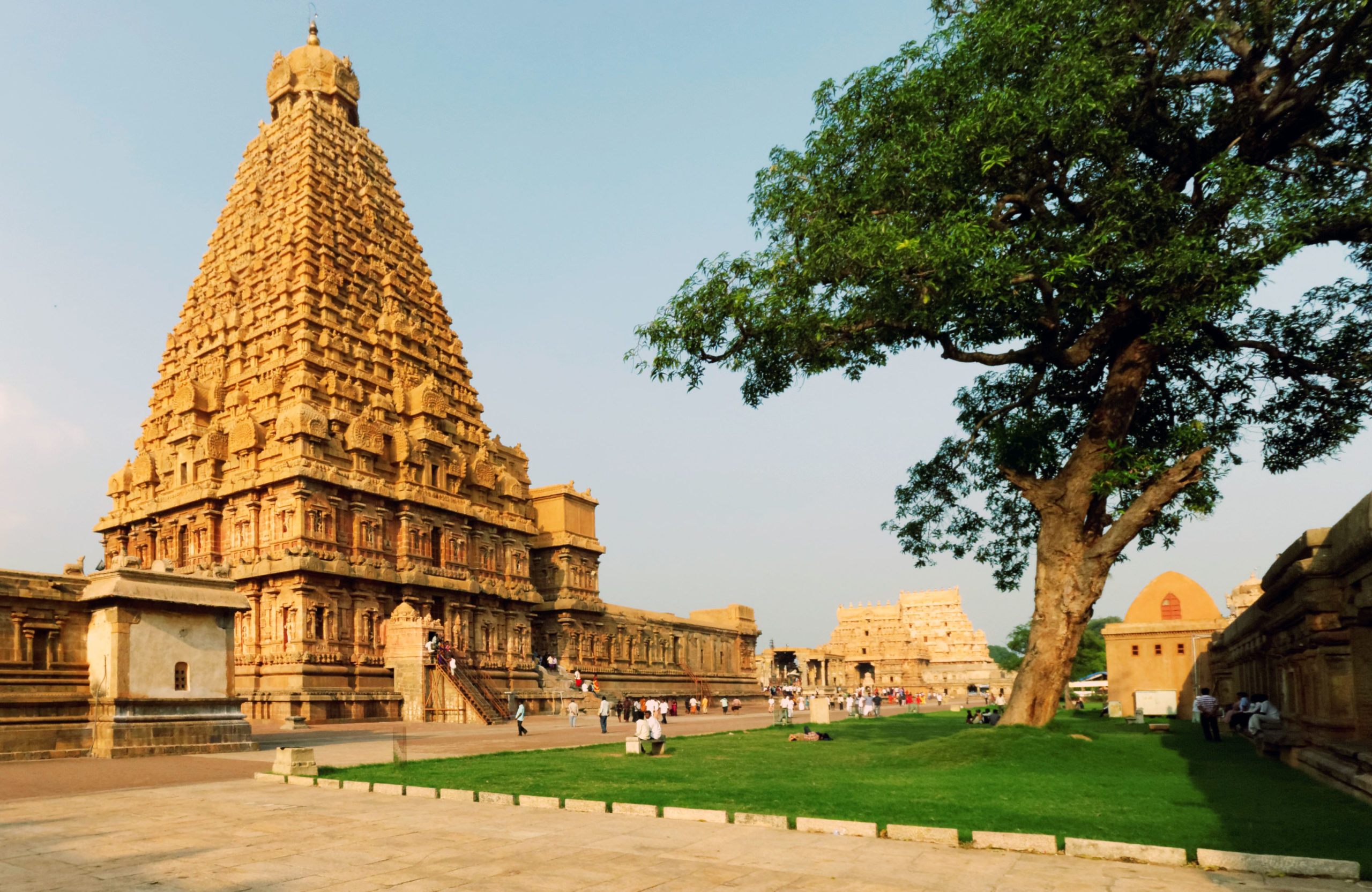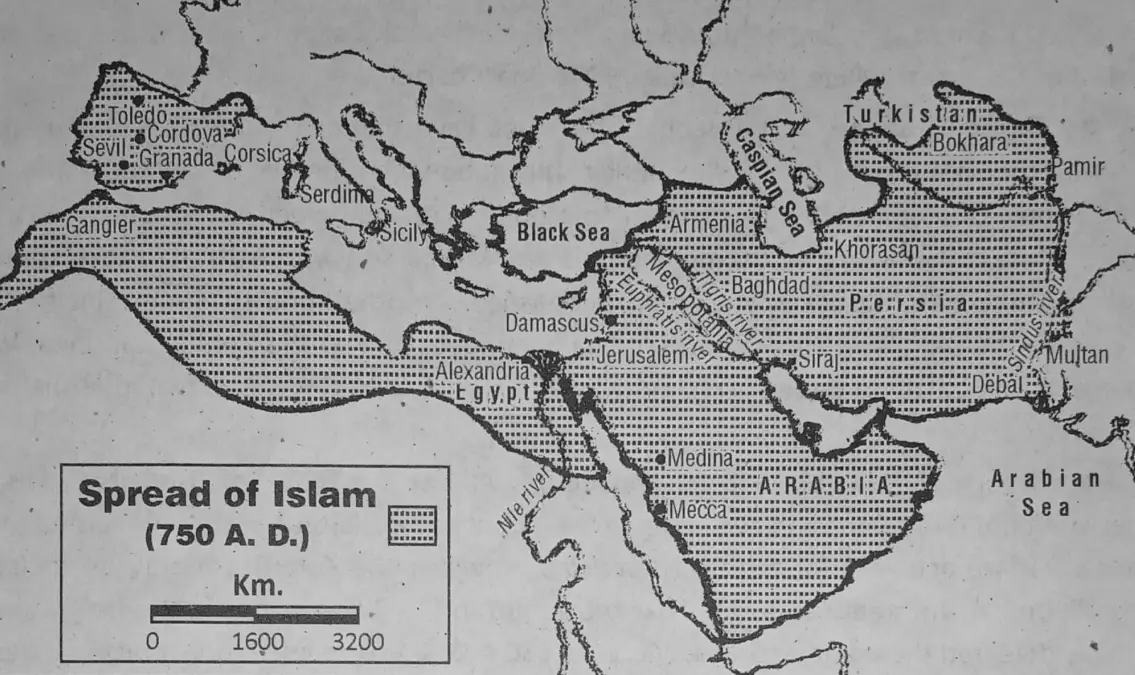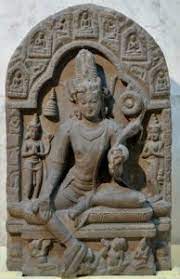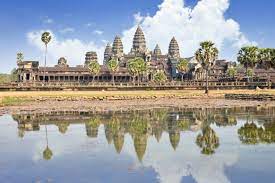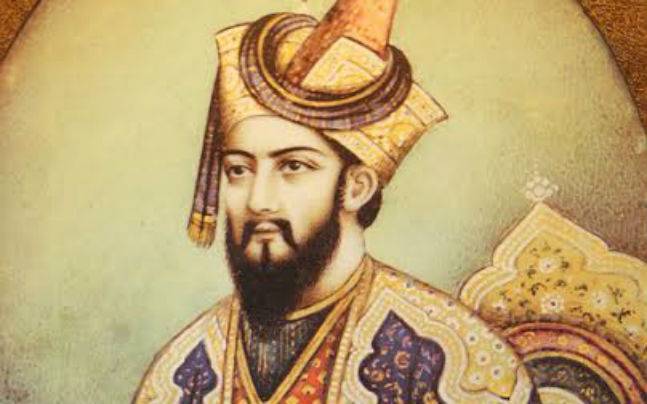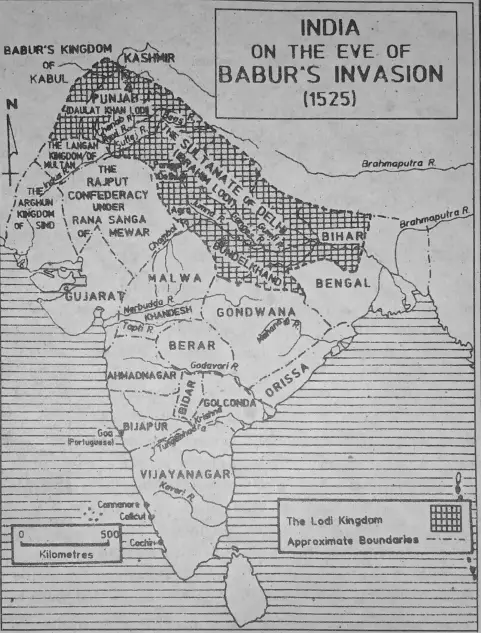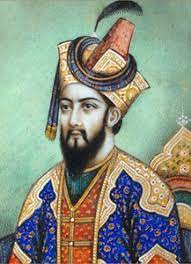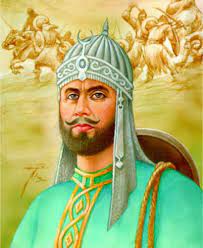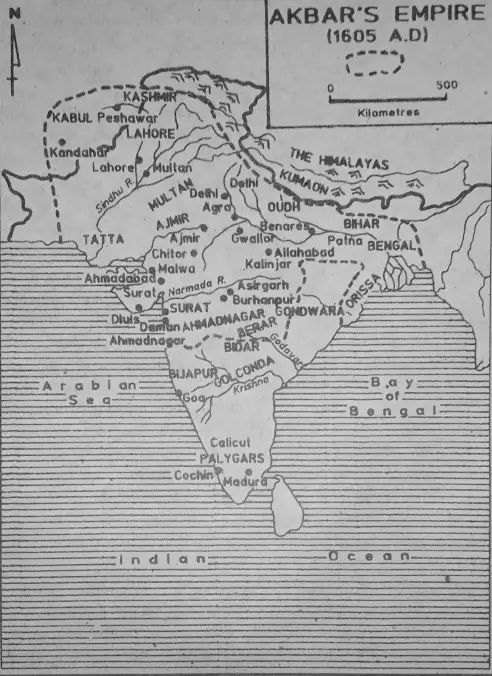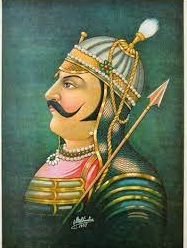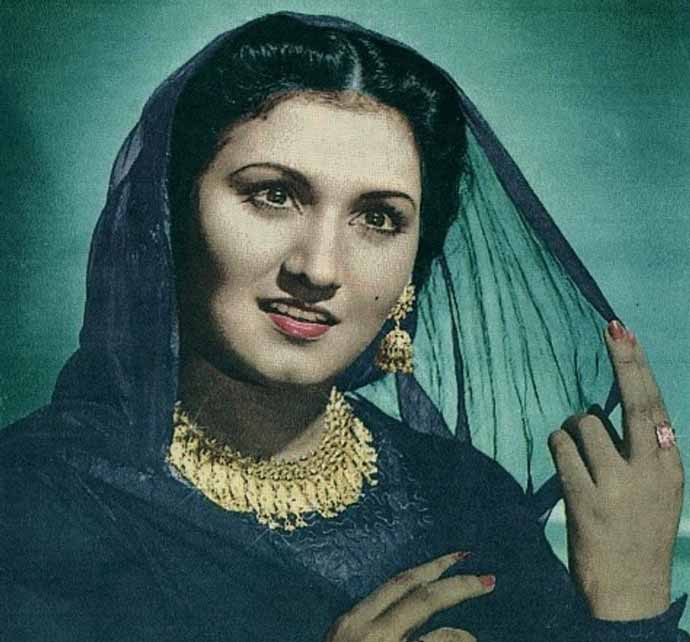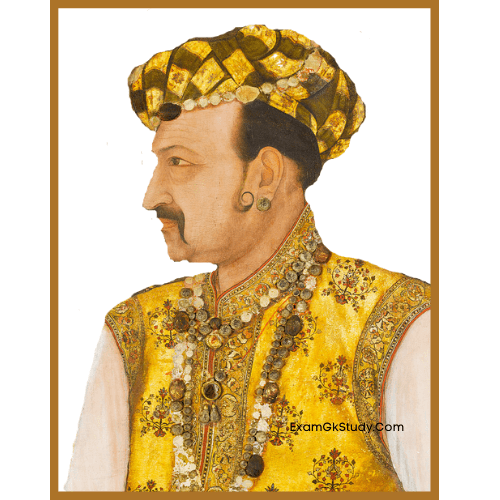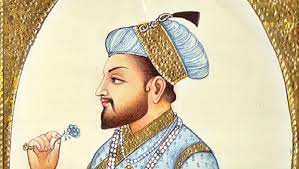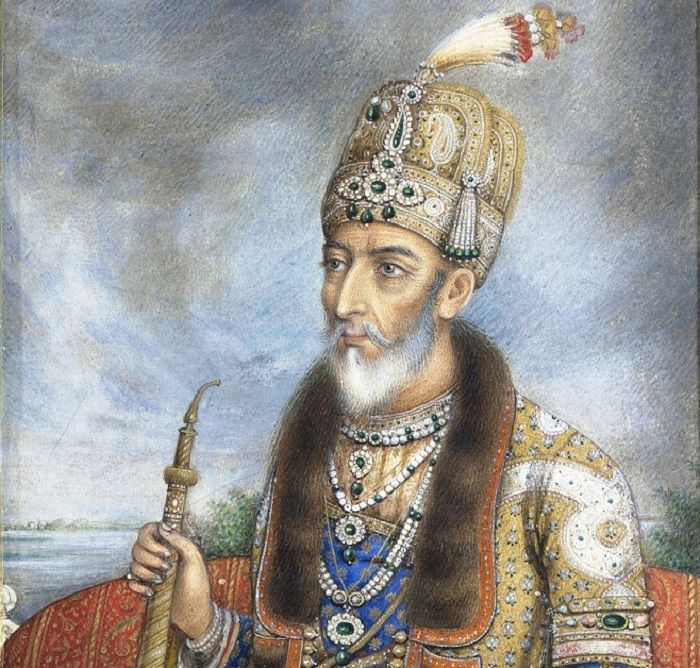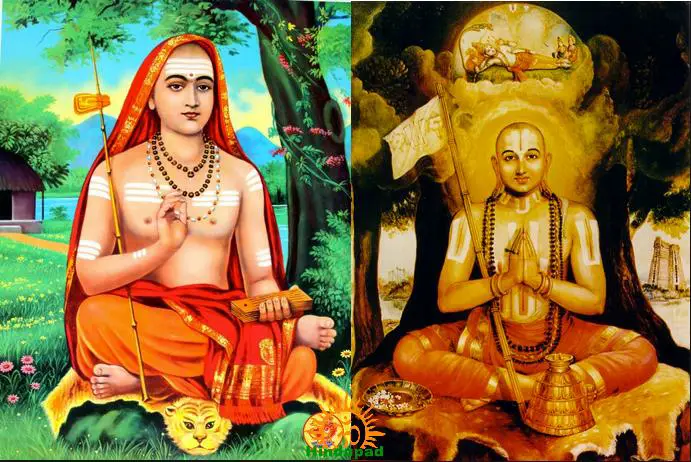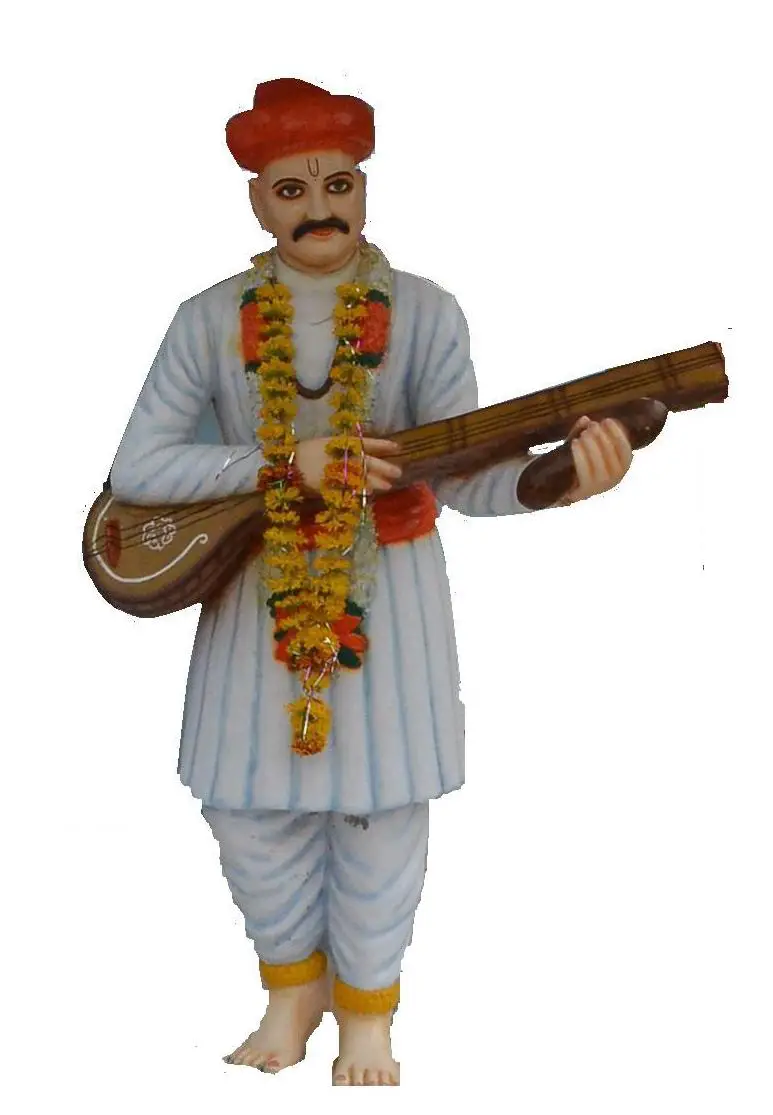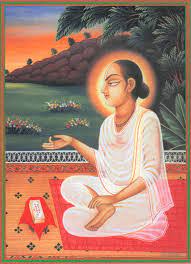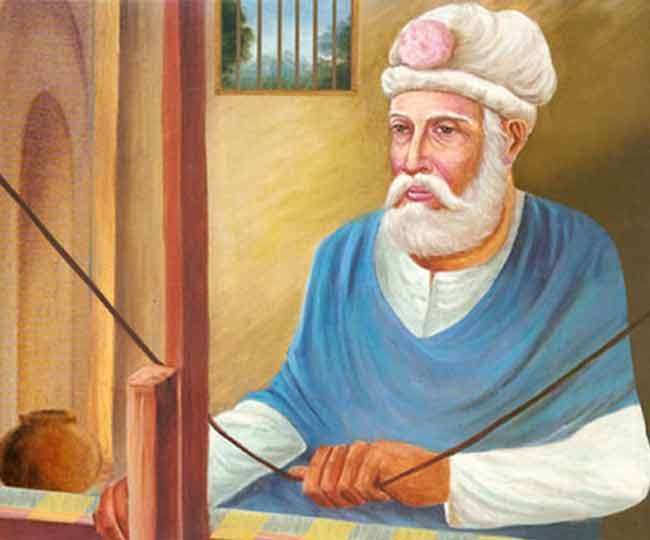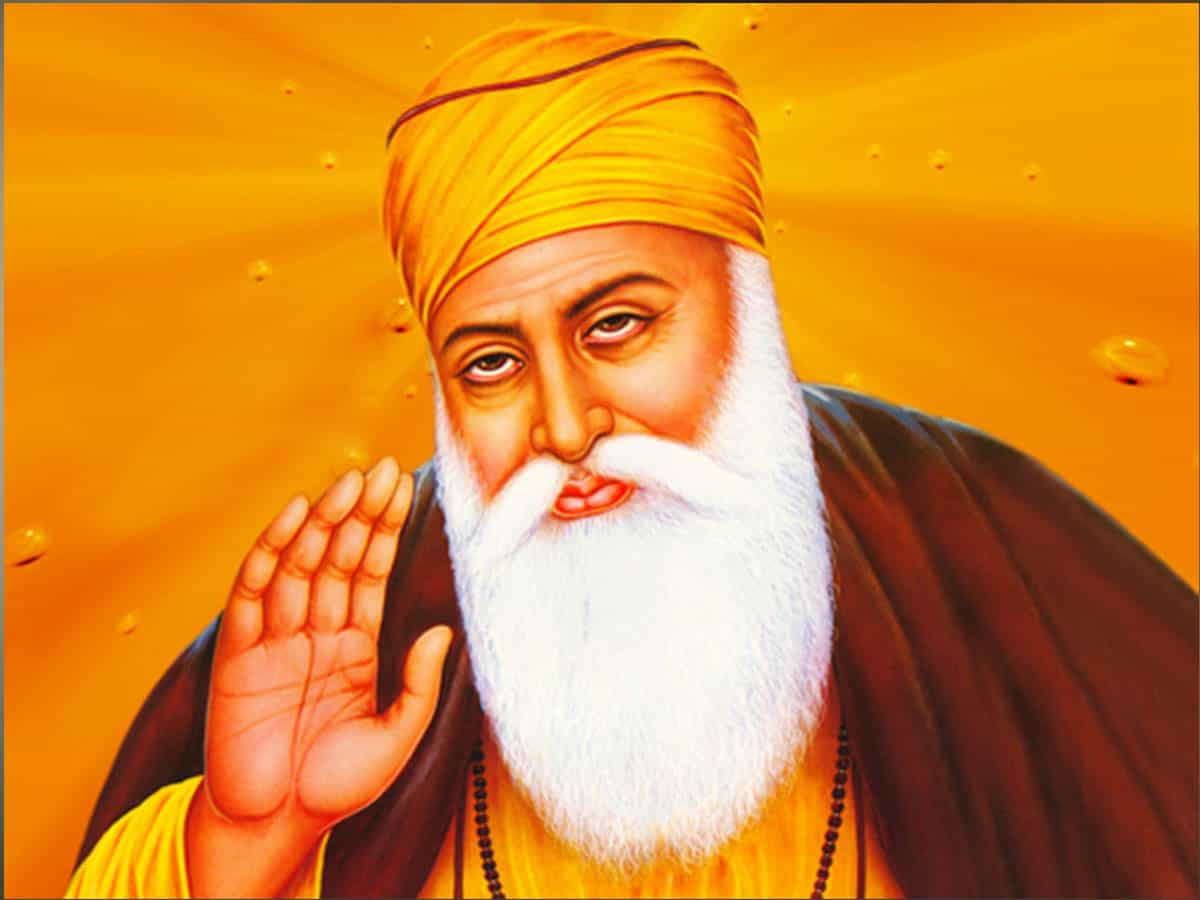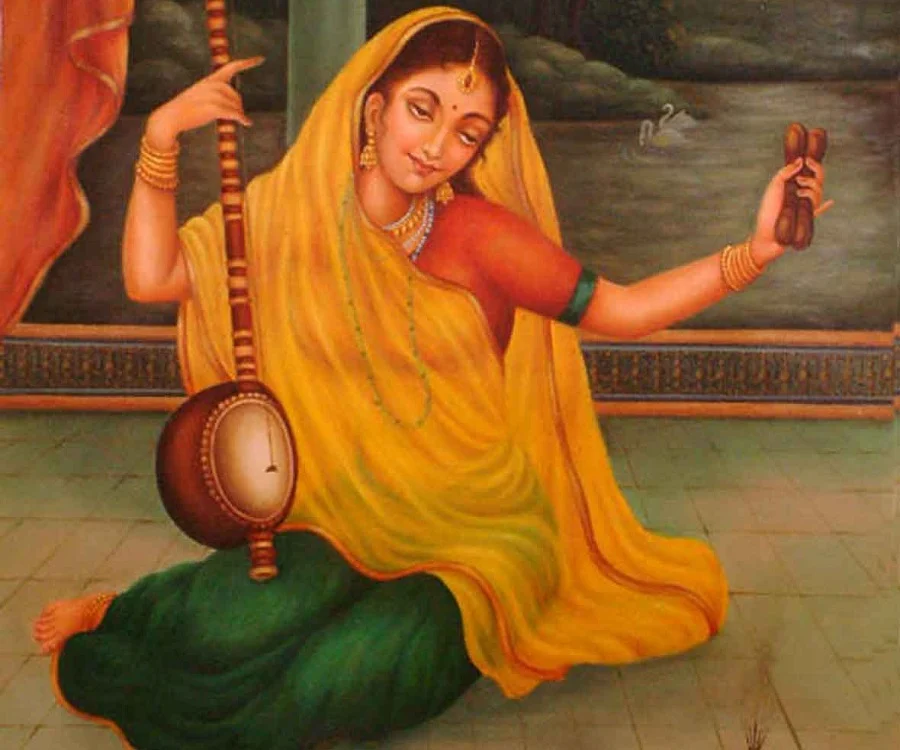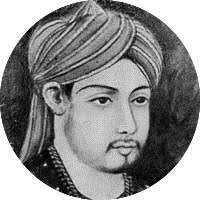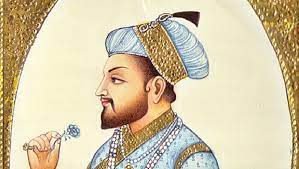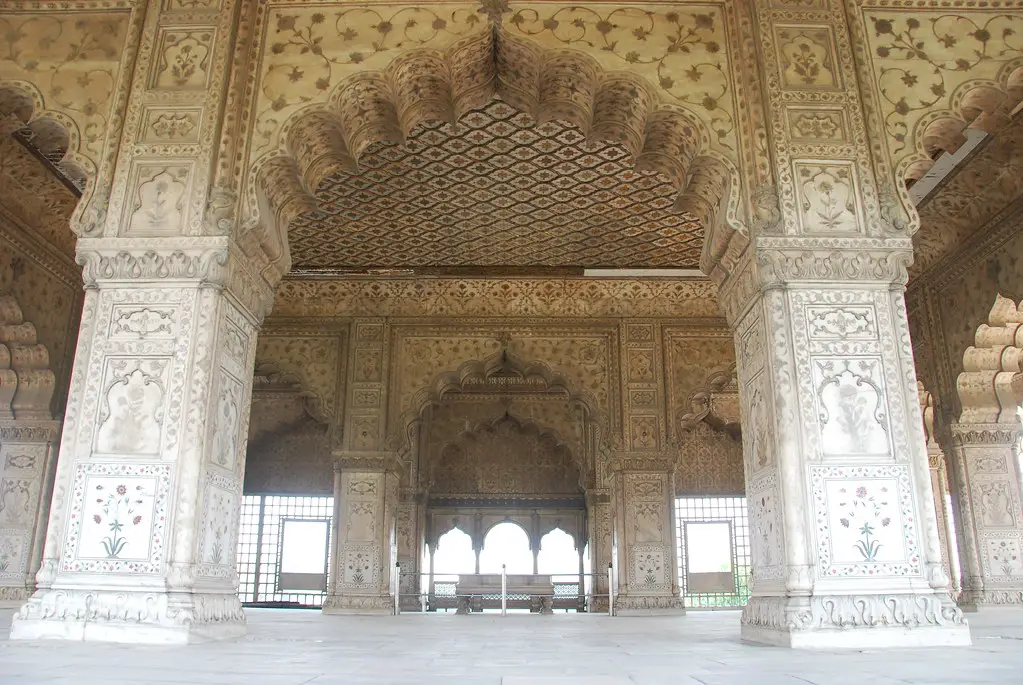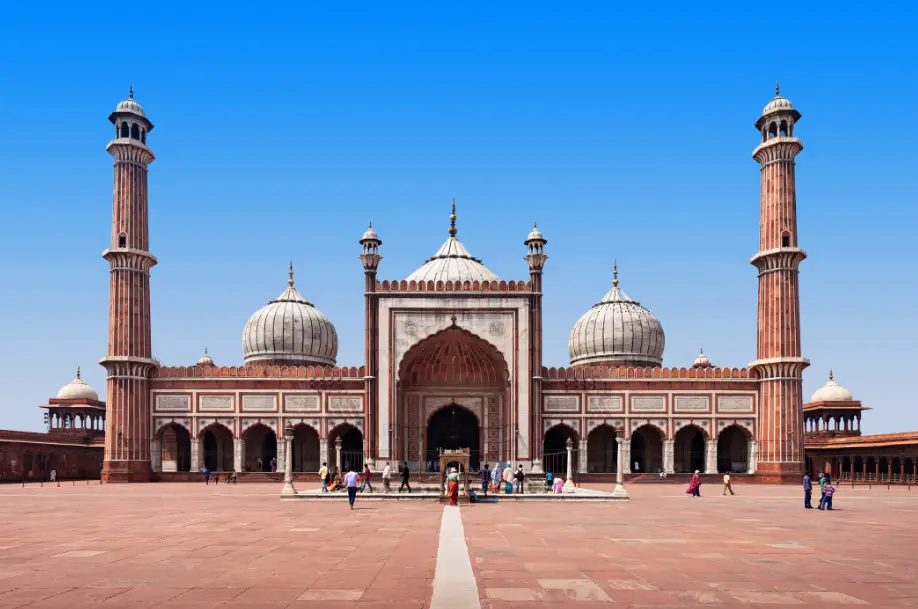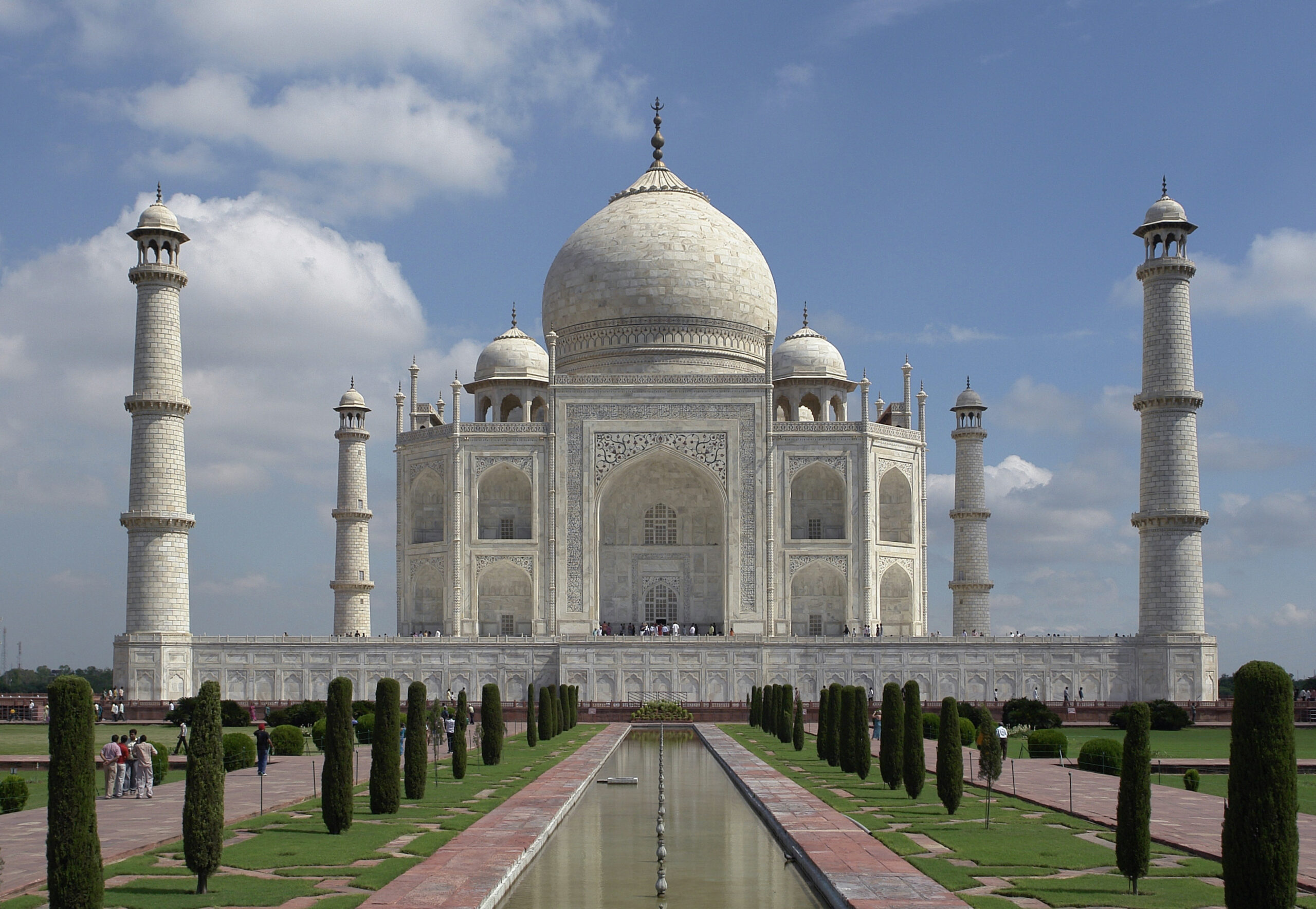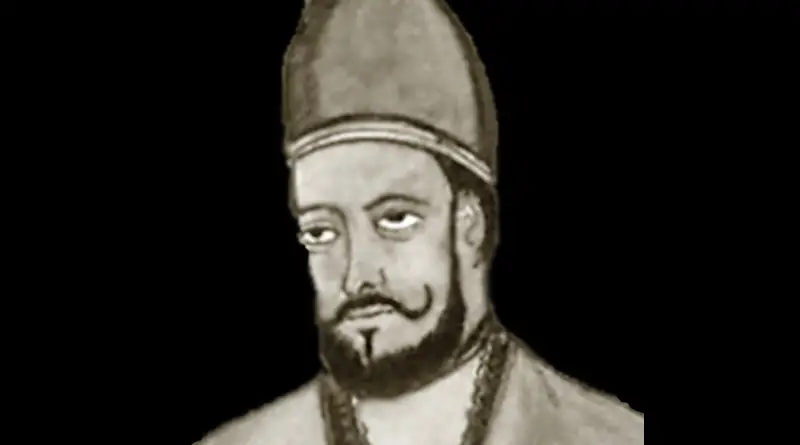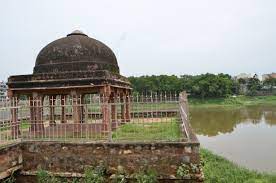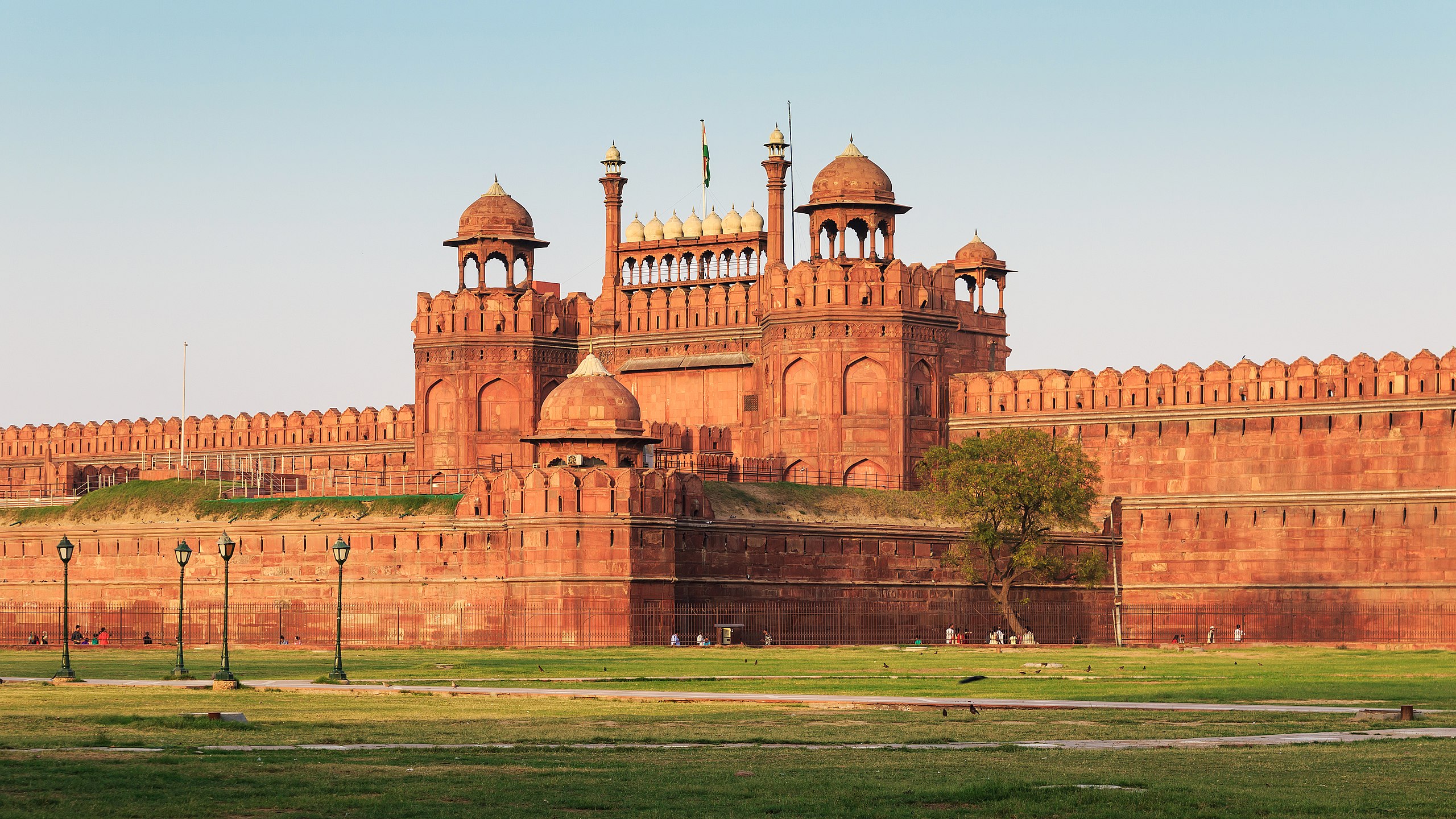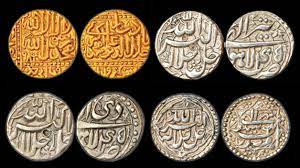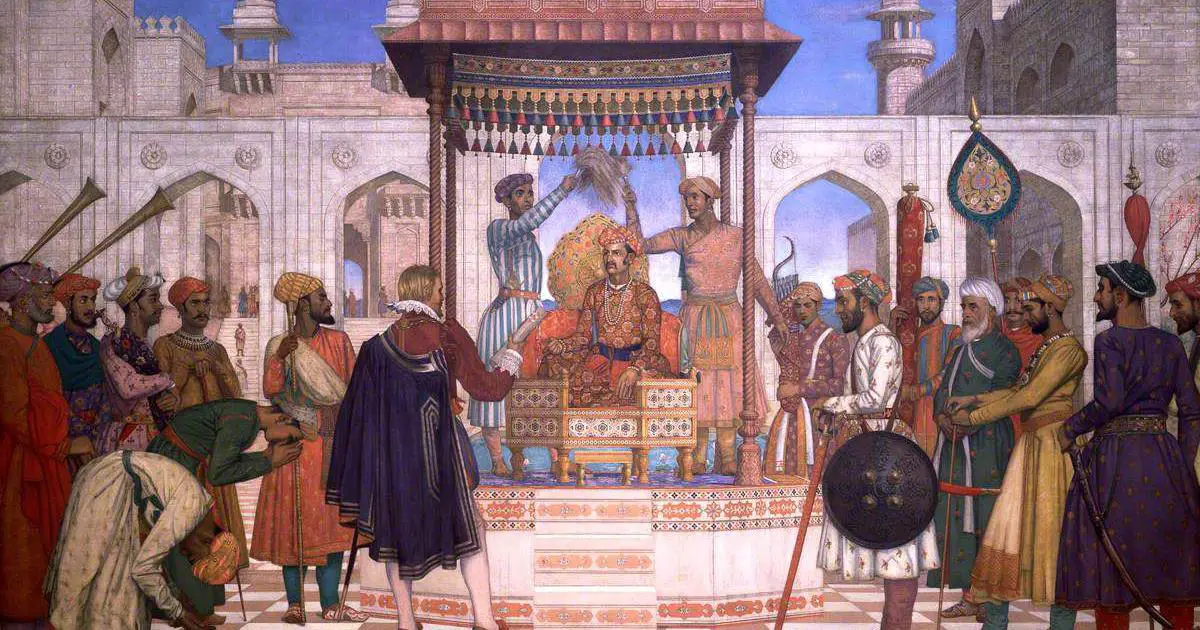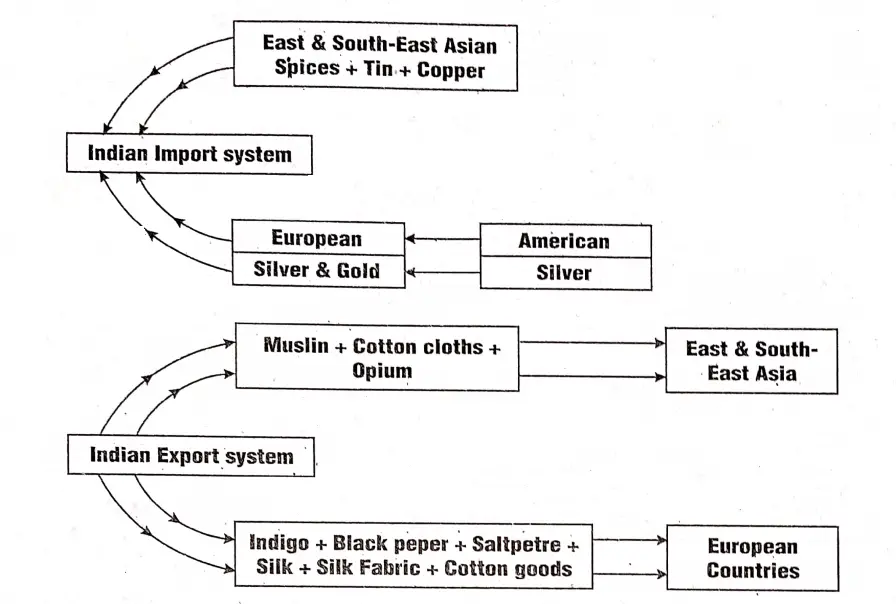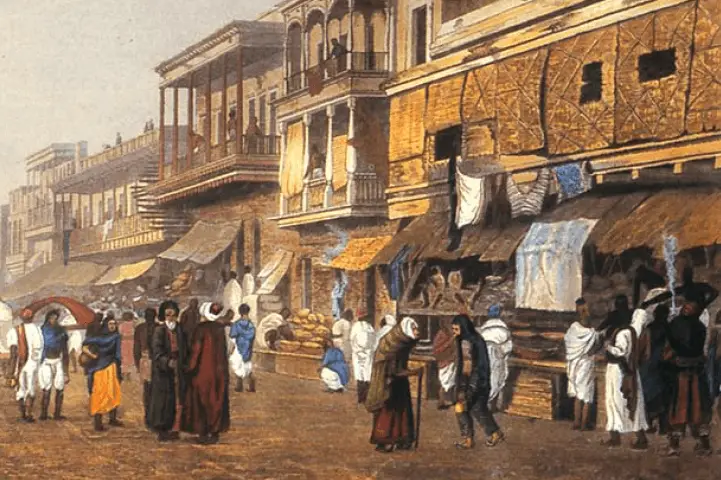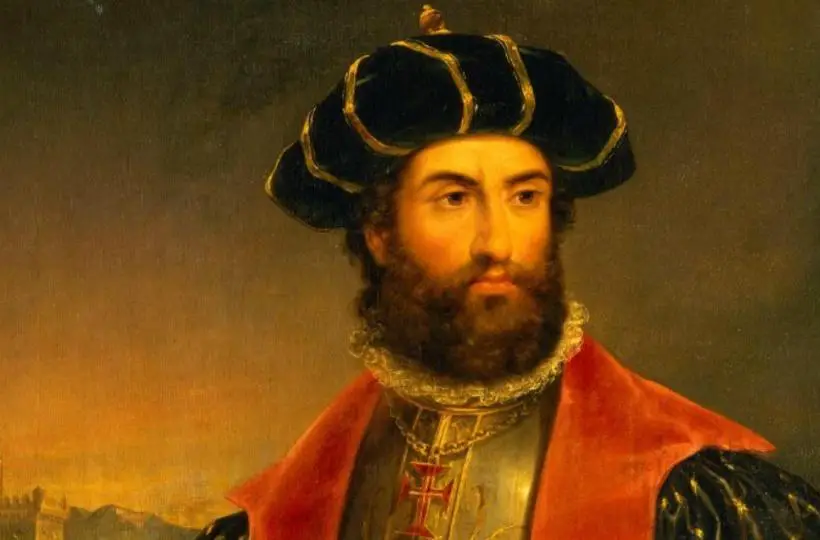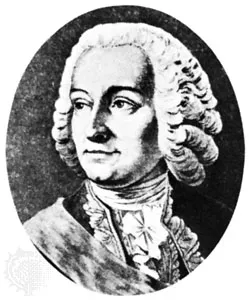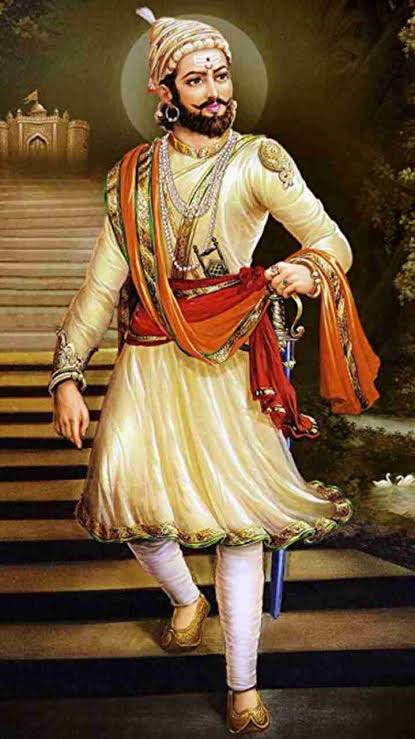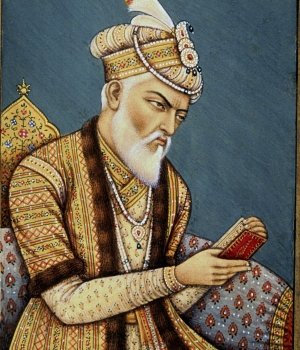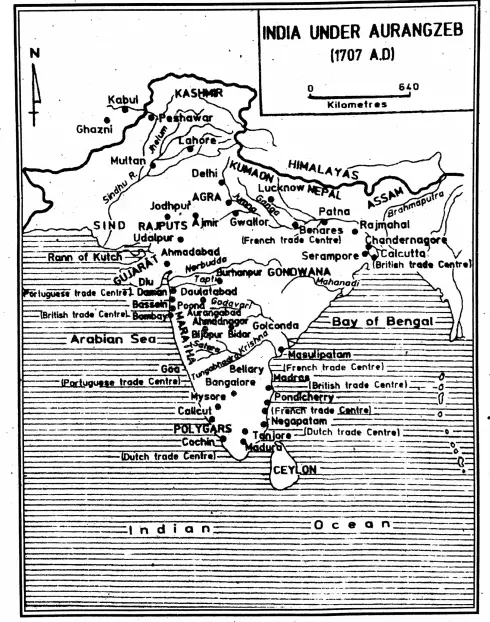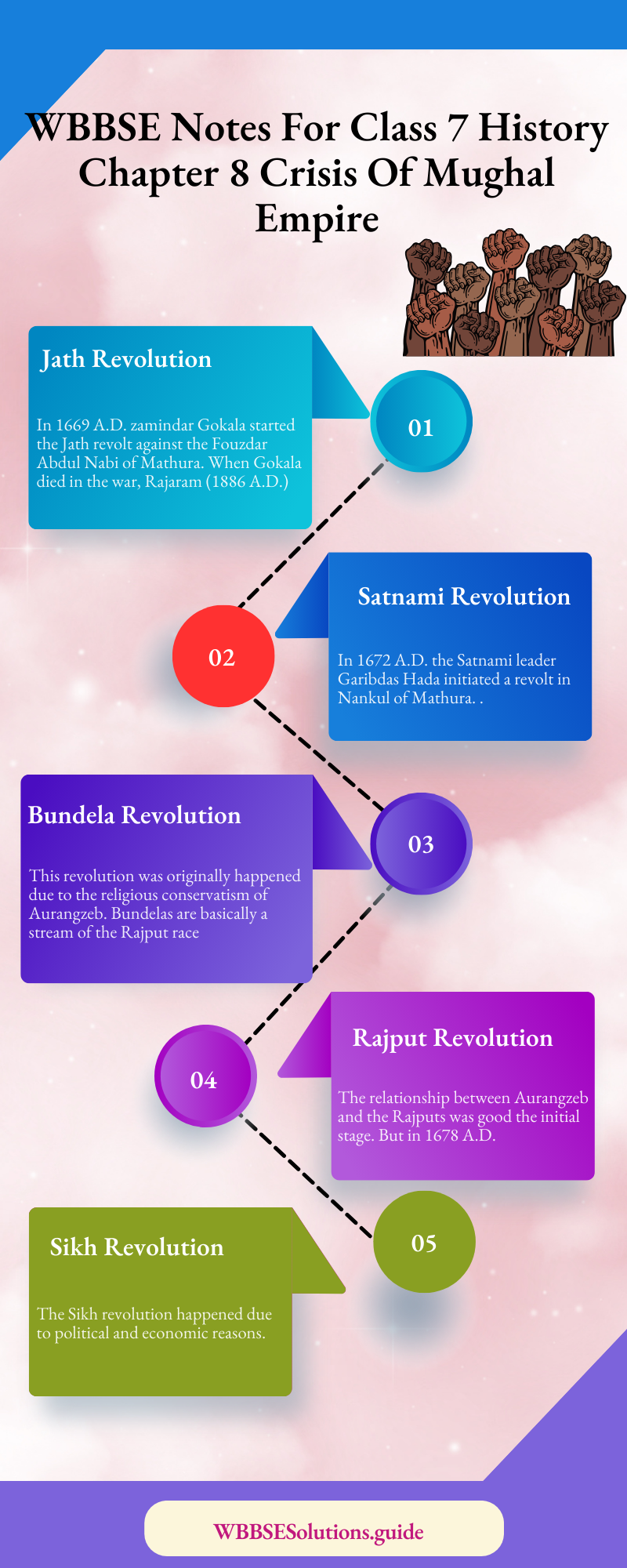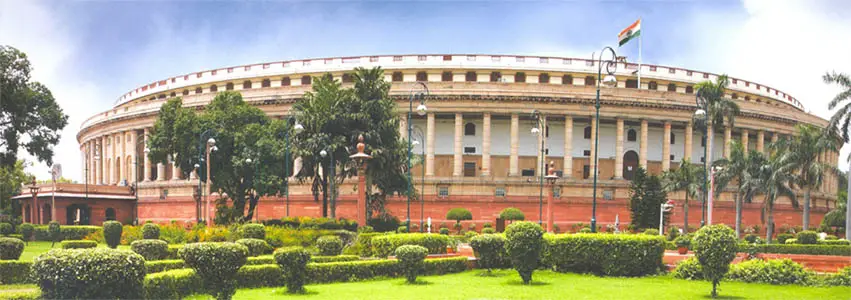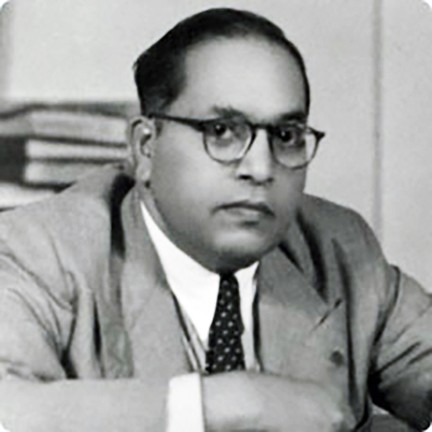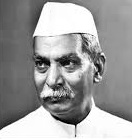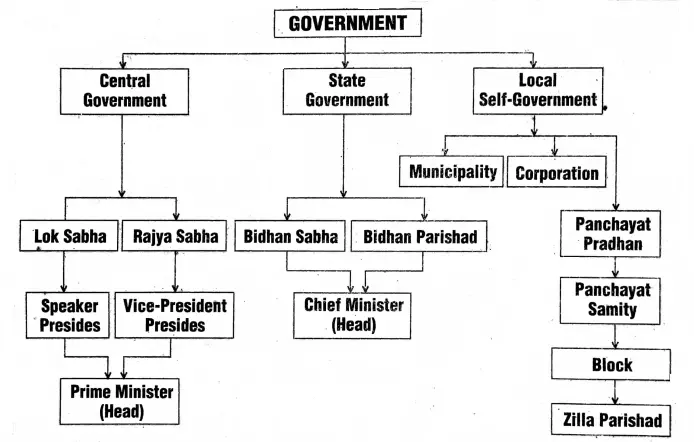Chapter 4 Delhi Sultanate Turko Afghan Rule Establishment Of Slave Dynasty
Qutubuddin Aibek (1206-1210):
When childless Mohammad Ghori died, his main slave and efficient commandant Qutubuddin Aibek (1206-1210 A.D.) became the independent ruler of Delhi in 1206 A.D. He took the title ‘Malik’ and ‘Shipahasalar’.
He became free from slavery when Ghiyasuddin Ghori, the descendent of Mohammad Ghori, gave him the title ‘Sultan’ in 1208 A.D.. Then he became the symbol of Sovereign power.
He established the capital of the Sultanate Empire in Delhi after conquering Delhi, Kanauj, Gwalior, and, Ranthambore. After the coronation in Lahore in 1206 A.D. he became the sole Master of Hindusthan.
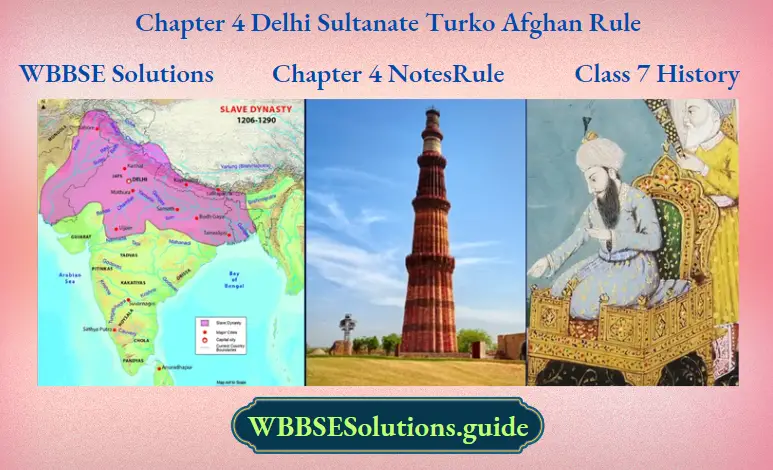
Read and Learn More WBBSE Notes For Class 7 History
Taj Uddin Ilduz and Nasiruddin Qubacha, the two commandants of Mohammad Ghori were the main enemies of Qutubuddin. So to set up a relationship with them, he himself married the daughter of Ilduz and married his sister with Qubacha.
Class 7 History Wbbse
On the other hand, with the instructions of Qutubuddin Bakhtiyar Khilji attacked Bengal and Bihar and destroyed the monasteries of Vikramshila, Odantapur, and Nalanda. Bhaktiar Khilji set up the new Turki Capital in Devikote by defeating Lakhsmansen of Bengal.
Under the instruction of Qutubuddin, Alimardan Khilji became the ruler of Bengal after the death of Baktiar Khilji. The Turky and non-Turky employees of Delhi submitted themselves to Qutubuddin.
In the language of Dr. Iswariprasad, ‘He ranks among the great pioneers of Muslim conquest in India.’
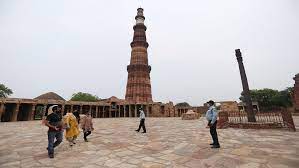
Character and Achievements:
Historians like Smith, Elphinstone, etc. described the royal family of Qutubuddin Aibek as the ‘Slave family’. Because Kazi Fakruddin Kufi brought him from the slave market of Nishapur and later sold him to Mohammad Ghori.
Class 7 History Wbbse
As Qutubuddin was a slave in his early life, hence the family set up by him was known as the Slave family. The meaning of the word Aibek was a slave. But in Turkey language, it means he who looks like a moon.
Anyway, though he was a slave in his early life, he had many qualities. It was known from the ‘Tariq-i-Mubarak’, he started constructing Qutubminar in remembrance of the Sufi Saint Qutubuddin Bakhtiyar Kaki.
” the delhi sultans class 7 pdf”
Dr K. A. Nizami was praised for his bravery and military talent, and said, “Aibek was a military leader par-excellence.” He was broad, noble, and generous. Sometimes he donated a lac of rupees. So people called him ‘Lakhboksh’.
Historian A. B. M. Habidullah said by evaluating him. ‘He combined the intrepidity of the Turk with the refined taste and generosity of the Persian”.
After reigning for only 4 years, he fell down from the horseback while playing Polo and died in 1210 A.D. His son Aram Shah became the next Sultan after him but due to his incapability and worthlessness, Iltutmish, the son-in-law of Qutubuddin became the Sultan in 1211 A.D.
Chapter 4 Delhi Sultanate Turko Afghan Rule Sultan Iltutmish 1211 To 1236
Iltutmish, with the requests of his Amirs and Omrahs of Delhi, became the king by killing Aram Shah, the worthless stepson of Qutubuddin. Iltutmish was a slave in his first life. ‘Encyclopaedia of Islam’ had described him.
Class 7 History Wbbse
‘Iletmis’ due to his attractive figure. The word Iltutmis has been derived from Artemis. He identified himself as a Turkish Muslim, a descendant of Ilbari Turkey just to erase the agony of being a slave.
Iltutmish, the son-in-law of Qutubuddin, was the ruler of Badaun near Delhi in the 1st stage of his life. Later, by the dint of fortune, he became the Sultanate of Delhi (1211 A.D.)
The problems of Iltutmish:
Many problems were there from the time of Qutubuddin. The problems further increased during the 11-month-old ruling of Aram Shah. Basically, he became the king in a chaotic problem-striking atmosphere.
At the time of becoming king, the main problems were-
- The revolt of Nasiruddin Qubacha of Sind.
- The capture of Punjab and aggression towards Delhi by Tajuddin Ilduj of Ghazni.
- Revolt of Ali Mardan Khalji, the ruler of Bengal.
- Declaration of war of independence by the Rajputs of Gwalior, Ranathombore, Jallore, Ajmer, etc.
- Many members of his royal court made a coup against him.
- The probable invasion of India by Mongol leader Chengiz Khan.
Solution Iltutmish took some very stem measures to stabilize the political crisis. First of all, he subdued the villain’s Amirs and Omraḥs of Ajodhya, Varanashi, Badaun, Shivalik, Delhi, etc., and established his dominance in 1212-1215 A.D.
Wbbse Class 7th History Notes
He also established his dominance by subduing the revolts by Tajuddin in 1216 A.D. and Nasiruddin Kubacher in 1217 A.D. in the Mansera battle. Such dominance was over Sind, Punjab, and even Ghazni.
He made his son Nasiruddin Mahmud, the ruler of Bengal by subduing the revolt of Bengal in 1225-1227 A.D. But due to his untimely death (1229 A.D.) Iltutmish was compelled to kill Iqtiaruddin Mohammad-Bin-Bakhtiyar Khilji in 1230-31 A.D.
” history of delhi”
For his arrogant nature, though he became the king of Bengal, and made his subordinate Malik Allauddin Jani, the ruler of Bengal. During the period from 1226 to 1232 A.D.
He recovered the places like Gwalior, Ranthambore, Kalinjar, Jallore, Lahore, Ajmer, etc. He conquered Vilsa, Ujjaini, and Mahdore in 1234 A.D. It is said that Iltutmish destroyed the Mahakal Temple built by Vikramaditya.
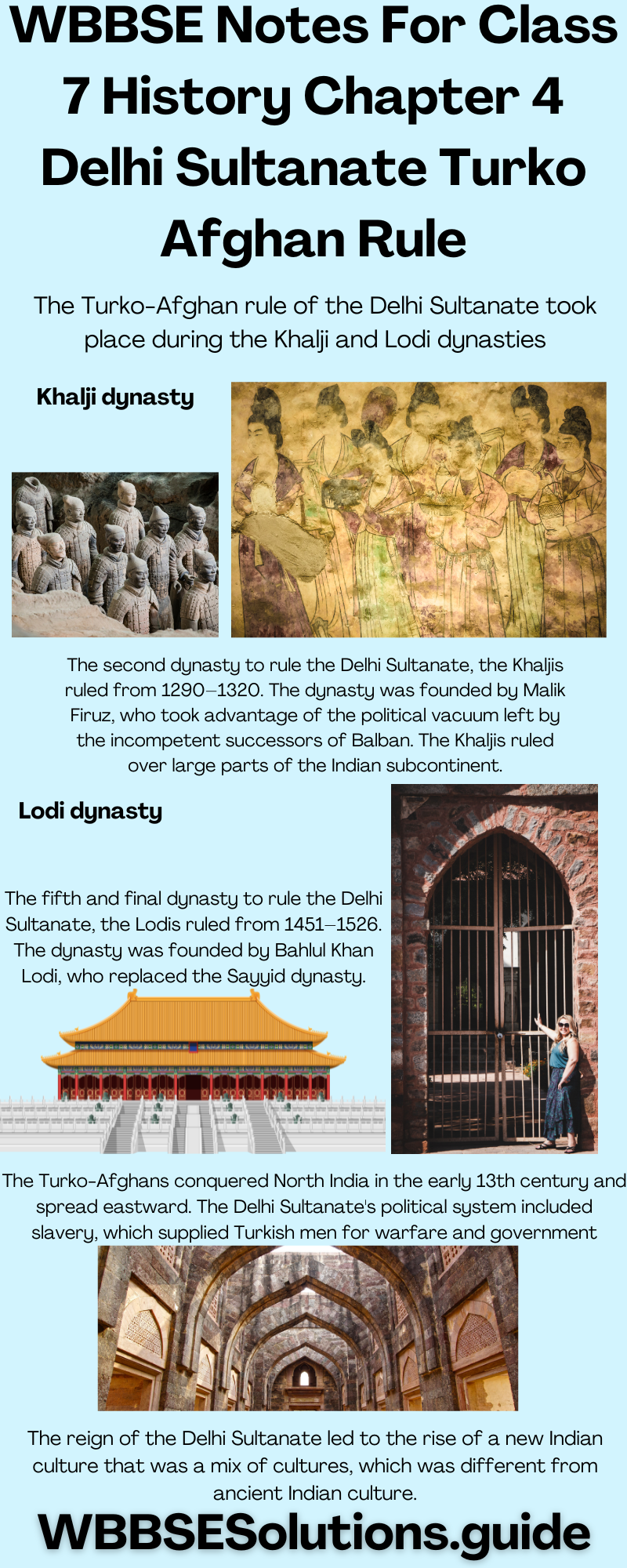
Invasion of Chengiz:
In 1221 AD the naughtorious Mongol leader Chengiz Khan attacked Khiba or Khoarizam of Central Asia, the capital of Jalaluddin Mangabarani. Mangabarani fled away and prayed for shelter to Iltutmish.
But he was refused by Iltutmish due to fear of Chengiz’s attack to India. Mangabarani left India. Chengiz also followed him up to Sindhu and looted Sindhu and Punjab.
Wbbse Class 7th History Notes
Mangabarni settled somewhere in the North-Western region by marrying a girl of the Kokkar community of that region. According to historian K. A. Nizami, Iltutmish had been able to strengthen the Sultani rule in Delhi and made it independent.
Acknowledgment of Caliph :
The way Iltutmish had developed the Sultanate empire of Delhi into a large one is a rare event in history. So the Caliph of Baghdad Al-Mustansir Billah gaye Iltutmish the title ‘Sultan-i-Azam’ or the best sultan.
Iltutmish mentioned himself as the ‘Commander of Caliph’ in his silver coin. The weight of this coin was 175 gm, Besides this, he renamed Delhi as ‘Hazrat-i-Delhi’ for increasing its international prestige and importance.
Historian Sir Wolseley Haig said, “Iltutmish was the greatest of the slave kings.”
Other achievements:
Iltutmish constructed the Bandegi-Chihalagani to establish his empire on a solid base of extreme sovereign power and good administration. He also developed the Turki empire in India. He first introduced Arabian coins.
He also introduced the copper coin ‘Jital’ and the silver coin ‘Tanka’. Numismatists Edward Thomas and Nelson Wright think that Iltutmish was the person who first introduced the well-organized coinage system in the Sultanate age.
Wbbse Class 7th History Notes
He was the first to introduce the ‘Iqta’ Jagir system. He developed a royal administration and became free from Ghur and Ghazni. He built many places, mosques, and towers in Delhi. He finished the incomplete job of Qutubminar (1231-1232 A.D.)
Hence according to Dr K. A. Nizami, ‘It was he (Iltutmish) who gave the country a capital, an independent state, a monarchial form of government and governing class.’ Iltutmish was righteous, honest, and interested in art and education.
The scholars like Minhaz-Uddin-Siraj, Nijam-ul-Mulk, Junaaidi, and Fakar-ul-Mulk-Isani were members of his royal court. So, the historian Dr Iswari Prasad thought, ‘Iltutmish was undoubtedly the real founder of the slave community.’
Chapter 4 Delhi Sultanate Turko Afghan Rule Sultana Raziya 1236 To 1240
Iltutmish chose his only intelligent and educated daughter as the able successor of Delhi’s throne as he observed his sons to be worthless.
But the conservative Turk Muslims refused to accept Raziya as the empress of Delhi and were left insulted to be under the rule of a woman, they made her son Rakunuddin Firoz as the Sultan of Delhi after the death of Iltutmish (1236 A.D.).
But members of the royal court ultimately were compelled to request Raziya to be the Sultan of Delhi because due to the incapability of Rakunuddin, revolts started in and around Delhi.
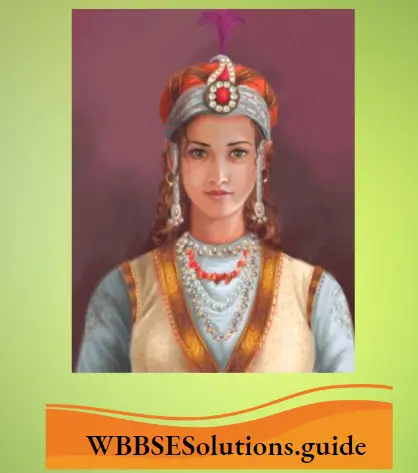
Sultana Raziya became Sultan in 1236 A.D. and reigned for only four years (1240 A.D.) with pride and prestige. From the text ‘Futuhaus-Salatin’ written by pandit Isami, many things can be known about the tenure of Raziya.
Wbbse Class 7th History Notes
Raziya was the only lady in the medieval age who became Sultan through election by the people. She was intelligent kind and a warrior. So she was very efficient in horse riding and sword fighting. Being dressed as a man, she used to conduct royal proceedings.
Just after being the empress, she emphasized the introduction of concentrated central rule by snatching powers from the hands of the aristocrats. She abolished the ‘Circle of forty’ which was constituted by the Turk aristocrats.
She employed many non-Turk Muslims in high posts. A Habsi leader named Jalaluddin Yakut Khan helped Raziya to constitute a non-Turk team. She got help from Kabir Khan and Malik ljuddin to kill the revolting leader Nizam-ul-Mulk-Junaidi.
Chapter 4 Delhi Sultanate Turko Afghan Rule Ghiyasuddin Balban 1266 To 1287
Ilbari Turky leader Ghiyasuddin Balban (real name Ulugh Khan) was purchased by Khoaza Jalaluddin in a slave market of Basra in Persia. After that Jalaluddin sold him to Iltutmish.
Then he became Amir-i-Shikar and became a member of the forty ‘Challisher chakra’. Due to the conspiracy of this elderly leader, daughter Raziya and two sons Mahamud Shah and Bahram Shah of Iltutmish were dethroned and declined.
Wbbse Class 7th History Notes
Balban gave marriage of his daughter to Nasiruddin Mahmud Shah and achieved the post of Nayeb-i-Mamlikat in 1254 A.D. But due to extreme greed for power and the throne, he murdered his son-in-law Nasiruddin in 1265 A.D.
With poison at the age of 36. According to the historian Isami, Balban acquired the throne of Delhi in this manner. He was 60 at that time.
The old Balban ruled from 1266-1287 A.D:
As an autocratic sultan. At this time, he proved himself stronger than the Turkey aristocrats. He campaigned himself as the representative of God or ‘Nayeb-i-Khudai to Louis fourteenth. He took the title ‘Jilillah’ like the Sasanian.
The dynasty of Persia introduced the custom of “Paobos” (to kiss the feet of the Sultan) and “Sizda” (to stand on a bent knee). Laughing, humor, entertainment, and drinking were prohibited in the royal court.
New Longman Vistas Class 7 solutions
He used to attend the royal court in gorgeous dresses and in a heavy and serious atmosphere. He took some stern measures against some members of the Royal Court to subdue them.
He caned Malik Bakbak openly, the ruler of Badaun for killing a slave and for this similar offense, he caned 500 times the ruler of Ayodhya and fined him Rs. 20,000. Maintaining strict discipline in every sphere was the main specialty of his political ideology.
History Class 7 Wbbse
Historian Dr. Ashirvad Lal Srivastava rightly commented in his book ‘The Delhi Sultanate’ (P-117)-“By such crooked and barbarous measures he destroyed ‘the forty’ and cowed down those of its members that escaped death and dismissal.”
Problems:
Balban faced problems like-
- Weak successor in Delhi after Iltutmish.
- Death of the last unchild slave ruler Nasiruddin Mahmud,
- Mongol invasions created chaos and anarchy in Delhi.
He solved these problems by
- Restoring peace in restive Delhi, Doab, Kampil, Bengal, and its adjoining areas.
- He ensured the peace and loyalty of his subjects with the help of absolute autocracy and checked, the selfish members of the ‘Forty’.
- He banned pleasures and drinking of wine in the royal court.
- He appointed an efficient spy system to provide information and reorganized a strong and disciplined army.
- He rebuilt the old forts at Samana, Sunam, Dipalpur, and Bhatinda against the Mongol invasions in the North-Western frontiers. A huge army was also sent there to ensure the security of the people.
He subdued Tugril Khan, the rival leader of Bengal, and hanged the defeated soldiers to death. Balban died in 1287 A.D.
Chapter 4 Delhi Sultanate Turko Afghan Rule The Khalji Dynasty
Jalaluddin Khalji (1290-96 A. D.):
He (at the age of 70) was the founder of the Khalji dynasty. He killed the last Mameluk Turkis sultan of the slave dynasty of Delhi Kaikobad and his infant son Kymursh to establish the Khalji dynasty. This event was known as the “Khalji revolt”.
History Class 7 Wbbse
Alauddin Khalji (1296-1316 A. D.):
Alauddin was a believer of endless autocracy. So he used to say, just like Louis XIV ‘I am the state’ but he did not consider himself as a slave of the Caliphs.
Rather he took the title ‘Yamin-ul-Khilafat’ which meant helping the Caliphs. According to Dr. A. L. Srivastava, ‘He tried to make his state secular’. He was Alexander II.
His commander Nasrat Khan and Ulugh Khan defeated king Karnadeva of Gujarat and capsized his wife Kamaladevi and daughter Debaladevi after conquering Gujarat in 1297 A. D. He also conquered Ranthambhor (1299-1301 A. D.) by killing Rana Hamirdeva.
The soldiers of Alauddin killed about 30,000 Rajputs while conquering Chitore in 1303 A. D. It is known from the ‘Padyabat’ written by Malik Mohammad Jaysi (16th Century) that Alauddin invaded Chitore to win over Padmini, the wife of Ratan Singh.
But Padmini along with many Rajput women sacrificed their lives in fire by performing Jauhar Brata’. Alauddin was the first Muslim sultan who invaded South India by crossing the Vindhya mountain.
His faithful army chief Malik Kafur lead the South India campaign. He captured Devgiri by defeating Ramachandra Deva of the Yadav dynasty on the southwest of the Vindhyas. Later, Ramachandra helped Alauddin a lot for the South India invasion.
He compelled king Prataprudra, king of Warangal or Telengana dynasty in 1306-07 A.D. to surrender before him and got many treasures, 100 elephants, 700 horses, and a very precious diamond.
History Class 7 Wbbse
Alauddin defeated Vir Ballal III of the Hoysel dynasty of Dwarsamudra in 1310 A.D. and made that state as a tributary. He advanced up to Rameshwar Bridge in the South by defeating Vir Pandya and Sundar Pandya of the Pandya dynasty in 1311 A.D.
Administrative reforms:
Alauddin was a believer of extreme autocracy. His chief minister was Khoaja Khatir. To eradicate the conspiracies and to strengthen the administration, he took up certain measures such as,
- Introduction of spy systems namely ‘Barid’ and ‘Munhi’
- To seize the lands which were given to landlords under milk at, waqf, and in systems.
- Prohibited drinking and marriage and mixing among the aristocrats without permission.
- Withdrawal of all sources of affluence of the aristocrats.
The main pillar of Alauddin’s administrative structure was his military power. ‘Ariz-i-Mumaliq’ the defense minister, used to recruit soldiers. The cavalry division Bakshi-Fouz used to get 234 tankas per horse and 78 tankas for each additional horse.

Wages were paid in money or cash instead of land. To stop the corruption in the army, he introduced ‘dag’ for identifying horses and ‘Julia’ for the identification of soldiers. According to Ferista, his cavalry strength was 4,75,000.
History Class 7 Wbbse
He first introduced permanent and reserved forces in Delhi. Historian A. L. Srivastava said, “To him, belongs the credit of being the first Sultan of Delhi to lay the foundation of a permanent standing army.”
Economic reforms :
He appointed ‘Diwan-i-Asraf’ or accountant in the revenue department. ‘Diwan-i-Mustafi’ or the auditor was just under him. After that, there were posts like Karkun, Mutasharif, Muhashil, and Gomasta.
Alauddin abolished the earlier ‘Iqta system’ and acquired all the cultivable lands under government control or ‘Khalisa’. As a result, the local zamindars like Khut, Mukaddam, and Chowdhury lost their financial affluence and comfort.
He surveyed the entire land area and collected taxes. The taxes were as domestication tax, housing tax, Jijia tax, Carvi tax (10% in the case of Hindu merchants and 5% in the case of Muslim merchants), and also 50% ‘Khirraj’ or land revenue.
According to the historians like Habib and Afsar begum, there were political and economic motives behind these tax structures. Alauddin employed ‘Sahana-i-Mandi’ and ‘Diwan-i-Riasat’ to control the market.
The prices of essential commodities were fixed and spies were deployed to check the weighing of measures of the merchants. The price list as was follows Wheat = 7 jital, Rice = 5 jital, Job = 4 jital etc.
History Class 7 Wbbse
1 jital = rupee. According to Barani, due to such control, the prices of different articles remained unchanged. Similarly, Ferista, said that there was no way of increasing prices even at the time of famine or epidemic.
Lanepoole said, “Alauddin saved the poor by depriving the riches.” According to Dr. K. S. Lal, “The revenue regulations of Alauddin were meant to crush high landlords, they were in no way less prejudicial to the interests of the peasantry”. (History of Khilijis, by K. S. Lal)
Other achievements:
Though ‘Kazi-ul-Mumalik’ or the chief justice conducted the judicial system yet emperor himself settled many cases through appeal tribunals.
He introduced the postal system such as ‘Dava’ and ‘Aulakh’ (Horse riders) for the sake of exchanges of governmental information and news.
Though Alauddin was of brutal nature, yet he respected the scholars like Pundit Amir Khasru (“Medieval Rabindranath Tagore”), Hussain Nizami, Sufi Saint Nizamuddin Aulia, and Mohammad Samsuddin.
Chapter 4 Delhi Sultanate Turko Afghan Rule The Tughluq Dynasty 1320 To 1399 A.D
Mohammad Bin-Tughluq (1325-1351 A.D.):
Mohammad Bin-Tughluq was a talented Sultan in the medieval age. He was the only scholarly pandit and reasonable Sultan in the Sultanate age. The Tughluq dynasty was founded by Ghiyasuddin Tughluq or Gazi Malik in 1320 A.D.
And was killed by an accident in 1325 A.D. His son Juna Khan or Mohammad Bin-Tughlaq ascended the throne and introduced the following projects.
Class Vii History Book Wbbse
1. Increase of Tax in Doab (1326 A.D.):
There had been good cultivation in the fertile land of the Ganga-Jamuna-Doab region. So Sultan increased land revenue tax from 50% to a certain portion. According to Barani, the rate of such increase was 5 to 10 times high.
According to Ferista, this increase in rate was 3-4 times, ‘Amir-i-Kohi’ the employees of the revenue department used to take help of oppression and coercion to collect such taxes. This even continued in the year of drought also.
Measures were taken for punishment of the revolting tenants. As a result, many farmers and peasants fled away somewhere else. Many of them became dacoits and created unruly, situations.
For this reason, extremely chaotic conditions arose in political and cultivation fields. Sultan realized the actual condition of the farmers very late.
Then he tried to improve their condition by providing agricultural loans (Takkavi), equipment, seeds, and irrigation systems but in spite of these, he could not overcome the crisis. Barani the resident of Doab and historian Lanepoole described the miserable condition of Doab.
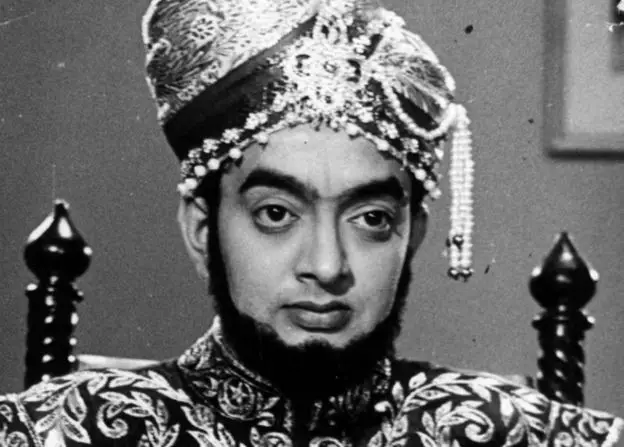
2. Transfer of Capital (1326-27 A. D.):
Sultan built a 700-mile-long road transferring capital from Delhi to Devgiri (Maharastra). According to Barani, Bin-Tughluq named Devgiri ‘Daulatabad’.
The main reasons behind this project were
- To save the capital from the attack of Mongols,
- To introduce good administration and establish political peace.
The plans were reasonable. But many old men and women including children died on the way to Devgiri as they were ordered by the Sultan to leave Delhi. The climate of Devgiri was very much unfavorable to the people of Delhi.
Class Vii History Book Wbbse
As a result, Sultan somehow managed to stay there for three years and then becoming unbearable, he returned back to Delhi. Both common people and the employees became extremely unsatisfied with the Sultan.
Historians said that it would not be that harmful if only the Government department were shifted, Historian Lanepoole said “Daulatabad remained as a moment of misdirected energy”.
3. Introduction of copper currency (1330 A.D.):
There was a good scientific reason behind the introduction of copper notes by Bin-Tughluq in 1329-1330 A. D. copper was available at that time. In his time, there were the usages of the gold coin ‘Dinar’, silver coin ‘Tanka’, and copper coin ‘Jital’. I dinar = 10 Tanka.
The strong reason behind introducing copper currency was
- Kublai Khan of China introduced the paper currency. Chao and Gaikhatu Kings of Persia introduced symbolic currency and both of them were successful.
- According to Gardner Brown, the Fourteenth century was the century of the extreme crisis of silver.
The supply of silver in India decreased at that time. But copper was easily available in good quantity. Taking this into consideration, Sultan introduced the copper currency. These currencies were known as ‘Dokani’.
Class Vii History Book Wbbse
It looked beautiful also. Numismatist E. Thomas so called Sultan “The prince of moneyers”. The Government seals were forgotten to be inscribed on the notes. And due to this little mistake take currencies were made everywhere.
It became a cottage industry in almost every house for making fake notes. The shopkeepers, merchants, and foreign traders refused to accept the fake notes. Then the Sultan settled their accounts with gold and silver coins.
After carrying in four years with extreme difficulty, Sultan gave up the project of copper currency. As a result, a tremendous economic crisis occurred. But as per Iban Batuta, the royal treasury was not empty at that time.
4. Plan to conquer Karajal and Khorasan:
During the regime of Mohammad Bin-Tughluq, many amirs from Western Asia and Central Asia took shelter in Delhi as those places were very much politically disturbed.
So according to Barani, Mohammad Bin-Tugluq collected 3,70,000 soldiers and maintained them for nearly one year to mature the plan of conquering Khorasan. In the year 1337-38 A.D., he invaded the Karajal state of Qumaum in the Himalayas after capturing the Nagarkot fort of Kangra valley in Punjab.
According to Iban Batuta, the main object of the Karajal invasion was to demarcate the boundary of India and China. So, about 10,000 soldiers under the leadership of Khasru Malik advanced towards Karajal in the rainy season.
Though the battle was won, but due to extreme rain, coldwave, and foolishness of the soldiers only 10 soldiers out of 10,000 had been able to return to Delhi. The rest of the soldiers died due to the adverse climate.
Chapter 4 Delhi Sultanate Turko Afghan Rule Firoz Shah Tughluq 1351 To 1388 A. D
Firoz Tughluq did not have military genii like Mohammad Bin-Tughluq and Alauddin. But he introduced many philanthropic activities. The chief minister Malik Maqbul had a vital role in all welfare measures of Firoz.
His main public welfare works were-Firstly, Hé reduced the rate of land revenue, abolished the 24 illegal taxes of Mohammad Bin-Tughluq, and enacted only 4 taxes laid by the Koran. These were
- Khiraj or Kharaj or land revenue is 1/2 to 1/3rd of the total produce.
- Khams or tax of the plunder.
- Jiziya or religious tax is taken from non-Muslim and
- ‘Zakat’ or the 24th part religious tax collected from the Muslims.
Besides the irrigation tax or ‘sub’ was exacted through the production of both parts of the total crops. He abolished the change or interstate tariff. As a result, the price of necessary articles were reduced.
Class Vii History Book Wbbse
This information is found in the book of Afif, ‘Tariq-i-Firozshahi’. Secondly, Firoz ordered digging of five big canals for the development of irrigation
- The Jamuna canal is 150 miles long from Jamuna to Hissar.
- The Sutlej-Gharghara canal which was 96 miles long.
- The Jamuna-Firozabad canal
- The Gharghara canal
- The Hansey canal. Besides, he also arranged for the digging of many ponds and 150-deep tubewells.
Thirdly, he laid the foundation of many new villages and cities. He initiated new cities like Firozabad, Fatehabad, Firozpur, Jaunpur, etc.
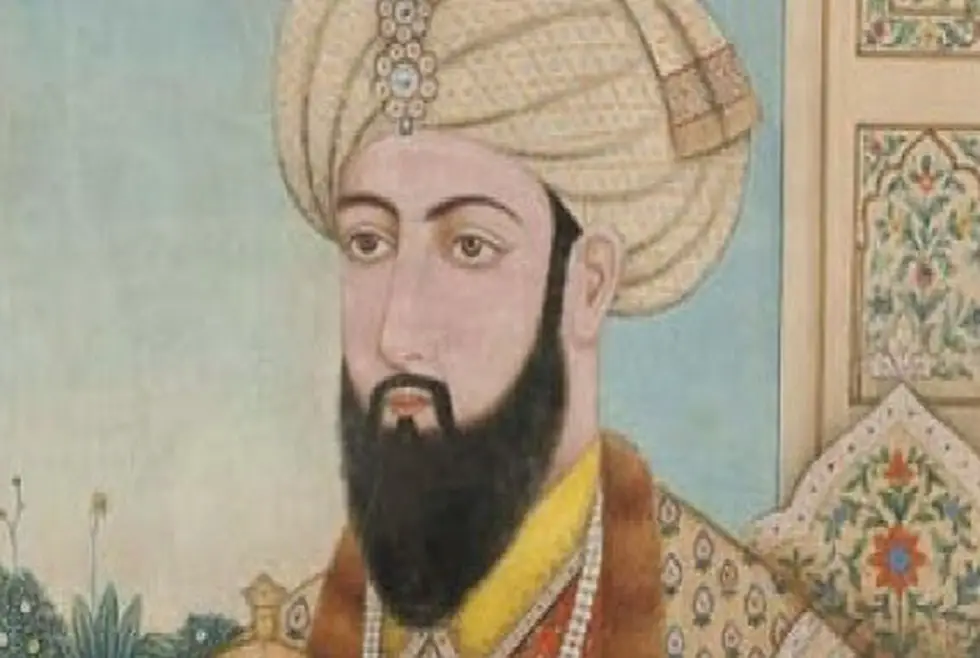
According to Afif, Firoz was also credited for the renovation of the memorials of Iltutmish, Alauddin, Nizamuddin Auliah, Jama Masjid of Delhi, Qutub Minar, etc.
Fourthly, Firoz set up an’ employment exchange’ for the placement of the unemployed. He used to donate a huge sum annually for the marriage of poor Muslim girls, and for giving official help to the old, the widow, and the orphans by creating ‘Diwan-i-Khairat’. He founded a charitable hospital named ‘Dar-ul-safa’.
Nasiruddin Mahmud (1394-1412 A.D.) and Invasion of Timur Lane:
Timur invaded India in 1398 A.D. during the regime of Nasiruddin Mahmud Shah, the last Sultan of the Tughluq dynasty of Delhi.
He killed a small number of people on the request of some Muslim personalities in Delhi, though he looted huge amounts of wealth by invading Dipalpur first, and then Bhatna. Timur retaliated on 18th December 1398 A. D.
when he was attacked by the soldiers of Nasiruddin Shah from the back. Nasiruddin could offer a very feeble attack and then fled away to Gujarat. Angry Timur mercilessly killed the public of Delhi for 15 days.
According to Badaun, due to this mass killing not a single bird flew in the sky of Delhi for long 3 months. The Sayyid dynasty (1415-1451): After the death of Nasiruddin Mahmud Shah in 1412 A. D.
Amirs of Delhi appointed Daulat Khan Lodi (1412-1414 A. D.), an Afghan leader, to the throne of Delhi. He was dethroned by Timur’s representative and the ruler of Multan, Khizir Khan (1414-1421 A. D.).
He thought of himself as an heir of Hazrat Mohammad’s daughter. Khizir Khan was the founder of the Sayyid dynasty. The three rulers of the dynasty succeeded him. Khizir Khan’s son Mobarak Shah took the title ‘Shah’ (1421-1434 A. D.)
And Mohammad Shah (1434-1443 A. D.) a nephew of Mubarak occupied the throne but had no efficiency. The last ruler of the dynasty was Alauddin Alam Shah (1443-1451 A. D.).
Class Vii History Book Wbbse
Due to his weakness Bahlul Lodi, an Afghan ruler of Punjab drove him out and captured the throne of Delhi. All the last successors of this dynasty were worthless.
The Lodi dynasty (1451-1526):
Bahlul Lodi (1451-1489 A. D.) was the founder of the Lodi dynasty in Delhi. He was the first Afghan (Pathan) ruler of India. During his long reign of 38 years, he conquered Jaunpur, Ranthambhor, Gwalior, etc.
His son Sikander Lodi (1489-1517 A. D.) conquered Madhya Pradesh, Bengal, and Bihar. He was a patron of culture and founder of good administration, but fanatic and theocratic by nature.
His son was Ibrahim Lodi (1517- 1526 A. D.) who was the last greatest ruler of the Lodi dynasty. He was a contemporary to Guru Nanak.
Due to the treachery of Daulat Khan Lodi, the ruler of Punjab, and Alam Khan Lodi, the unçle of Ibrahim Lodi; Babur the ruler of Kabul invaded Delhi and in the first battle of Panipat (21st April 1526) defeated and killed Ibrahim Lodi.
Thus Babur destroyed the Lodi dynasty and founded Mughal Empire in India.
Al-Beruni:
According to Hitti, Aburaihan Mohammad Aiban Ahmed Al-Beruni was born in 973 A. D. in a noble Irani family of Khiba (Khoarism) state in Central Asia. His span of life was considered from 973-1048 A. D.
Though Dr. A. L. Srivastava considered it as 970-1038 A. D. He was a good scholar in languages like Arbj, Farsi, Hebrew, Greek, etc. As a royal poet of Sultan Mahmud of Ghazni, he wrote two books on science namely ‘Al Tanjim’ and ‘Al Nazam’.
In this time he translated the books like ‘Alma Gest’ and ‘Euclyd’ of Tollemi. During the invasion of Sultan Mahmud in India, he came to this country and studied the Indian religious texts and Sanskrit language for long eight years.
During this time he studied Ramayana, Mahabharata, Gita, Bhagavata, Yagyabalka and Manusmriti, Sankhyakarika (Iswarkrishna), Yogsutra and Nyayasutra (Patanjali), Mimangsasutra (Jaimini), etc.
Class Vii History Book Wbbse
Apart from this, he translated many Sanskrit texts into Arbi-Farsi. Those are ‘Brihat Sanghita’ and ‘Laghuyatak’ by Barahamihir, ‘Brahmasputa Siddhanta’ and ‘Khandakhadyak’ by Brahmagupta, ‘Yogasutra’ by Patanjali, etc.
But he wrote the famous book ‘Tahakak-e-Hind’ in 1030 A.D. related to his visit to India. This book was known as ‘Kitab-ul-Hind’ in the Arbi language.
The meaning of Tahkak-e-Hind was-Analytical description of the thoughts of Hindus in the context of judgment as to what was to accept and what was not. The subject matter of this book was divided into eight topics in 76 chapters.
These eight topics were:
- The faith in social custom and system.
- Hindu Philosophy
- Law
- Literature
- Practical Science-Physical Science, Mathematics, and Astrology
- Geology
- Religion and rituals and
- Miscellaneous topics.
Iban Batuta
Iban Batuta was a habitat of Janjibar under Morocco of North Africa. He came to India in 1333 A. D. during, the regime of Sultan Mohammad Bin-Tughluq. He traveled to many places of India for 9 years out of which for five years (1333-1338 A. D.)
He was engaged as ‘Kazi’ in the royal court of Bin Tughluq. He was an exceptional scholar in many subjects. He wrote ‘Kitab-ur-Rahela’ the famous book regarding travel in India.
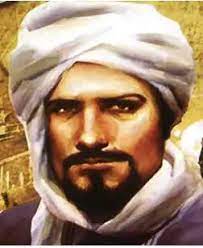
Almost all historians accepted the information and data mentioned in that book regarding the social, economic, and political history of the fourteenth century.
The union between Hindus and Muslims had been mentioned in the book Rahela written by Iban Batuta. Though he said that Hindus were forcibly converted into Muslims and made them slaves forcefully.
Even their social status and prestige were lower as Gimmies. Iban Batuta in his book ‘Rahela’ has described the festival of Mohammad Bin-Tughluq. He said “……After that, the dancers appeared.
In the first group, there were the daughters of those anti-Muslim Hindu kings, who were defeated and imprisoned in that year. After performing, Sultan distributed those girls among the Amirs. After that more girl performed dances etc.
And they too were distributed by the Sultan among his brothers, relatives, and the sons of the Amirs.” Iban Batuta himself received ten such young girls as presentation.
Class Vii History Book Wbbse
Thus he gave a very clear picture o how the lives of Hindu women were in danger and unsecured. Iban Batuta praised very high about the scholarship of Mohammad Bin-Tughluq but he added, that Sultan became so very cruel and ferocious when impatient.
Iqta System:
Iltutmish introduced the ‘Iqta system’ for collecting revenues from the peasants and also for the conduct of the regional royal administration.
According to Historian Irfan Habib, “It is called ‘Iqta system’ because of the fact that surplus of the cultivation of a farmer is considered as tax and that is distributed among the regional rulers.”
For the sake of administration, the Sultanate empire were divided into some military regions. This was known as ‘Iqta’. The military administrator was called ‘Mufti’ or Iqtadar.
The specialty of this system was to collect tax from the adjoining area, to maintain law and order, to maintain the sovereignty of the Sultan by subduing the revolts by the Chowdhuries. To collect Tax and its distribution and appointment of employees.
Dr. A. L. Srivastava in his book ‘History of India’ said, the Iqtadars, in the majority of the cases, were corrupt. because through forgery, they took out the excess revenues without depositing it to the royal treasury.
Balban appointed a special group of employees ‘Khouja’ to stop this malpractice. Alauddin completely changed and modified the Iqta system. He converted the private lands in and around Delhi into Government lands.
As a result, he abolished the Iqta system within Delhi and introduced the same in distant regions. He gave Iqta only to his chief of army staff, the rest got wages.
He determined the revenue changeable to Iqta and with this, he punished the corrupt Iqtadars. Ghiyasuddin made this Iqta system a bit reluctant. Firoz Tughluq made this system hereditary.
Circle of Forty:
Iltutmish introduced the ‘Circle of forty’ or ‘Bandegi-i-Chihalagani’. Basically, the circle of forty was constituted of 40 experienced Turks. The main reason of constituting the cycle was to take different advice for running a better administration.
Iltutmish used to rule with the advice of this cycle. Each of them had a tremendous influence over the royal court. After the death of Iltutmish, these leaders became very influential and selfish. Many of them were guided by the conservative Ulemas.
So the members of this cycle could not accept Raziya as a ruler from the time of her being Sultana. Raziya demolished this circle of forty when she found that a conspiracy was coming up against her.
The Ghiyasuddin Balban was an elderly member of this cycle of forty. The power-loving Balban killed all the members of this cycle of forty. The power-loving Balban killed all the members of this cycle when he became Sultan at the age of 60 and made himself enemy-free.
Class Vii History Book Wbbse
He did this because he realized the wilfulness and arrogance of the circle members during his membership in the said cycle.
New-Mussalman or Neo Muslims:
Jalaluddin Firoz Khalji (1290-’96 A.D.) resisted Mongol leader Abdullah when he attacked Punjab. He also made them go away from India. At that time, Ulugu the son of Halagu prayed for shelter to Jalaluddin along with some thousands of soldiers.
Jalaluddin first converted the sheltered Mongals into Islam then settled them at the outskirt of Delhi. These converted Mongols were known as “New Mussalman”. Many Muslims were identified as New Mussalmans.
The New Mussalmans of Delhi got dejected with Alauddin and revolted. They killed his nephew. Without the slightest delay, Alauddin sent his commander-in-chief Nasrat Khan in 1299 A. D.
To subdue the revolt of the Mongols (New Mussalman) and the imprisoned New Mussalmans were beheaded under the order of the Sultan.
It is said that about 30,000 New- Mussalmans were beheaded within a couple of hours and a gate was built with their heads in Bundelkhand of Delhi. He wanted to make people feel how dangerous would be to revolt against the Sultan.
Mahmud Gawan
Mahmud Gawan was the most efficient army chief and prime minister of Sultan Mohammad Shah III of Bahamani state in South India. The Muslims from foreign took charge of the Bahamani state due to the inefficiency of the Sultan.
During his ministership, the Bahamani state gained the maximum development. It is known from the book ‘Burhan-i-Masir’ that Mahmud Gawan captured Kondabir, Goa, and Rajmantrin after defeating the king of Vijayanagar.
Besides this, he received much wealth, elephants, horse servants, diamonds, and beautiful ladies from the Vijayanagar king. He also captured Khalna in Sangameswar and Orissa.
During Gawan, the policy of public welfare was adopted. He was able to stop taking bribes and other corruption by the government employees. He could not give up the religious conservatism though he was simple and of honest character.
But Gawan himself was very keen in mathematics and medicine, science. He built an education center in Vidar. There is a University named Gawan University. The other Amirs and Maliks could not tolerate the excessive popularity of Mahmud Gawan.
The cunning Amirs made a conspiracy against him and brought a charge of Anarchy against him. The Sultan, depending fully on this information, killed Gawan in an intoxicated condition on 5th April 1481 A. D. Bahmani’s empire declined speedily due to death.
Chapter 4 Delhi Sultanate Turko Afghan Rule Reasons For Decline Of Sultanate Empire Of Delhi
The Sultanate empire declined due to the defeat of Ibrahim Lodi by Babur in the battle of Panipat in 1526 A. D. The Sultanate Empire declined after its existence for about 320 years.
This decline was not due to any sudden singular factor. There were many reasons behind it, such as
1. Irregularities in succession and employment of slaves:
As there was no clear-cut law regarding succession and inheritance, the descendants started fighting among themselves for capturing the throne with the death of each Sultan.
Emphasis was given on capability and personal expertise in the event of appointing servants. But this system was null and void in the regime of Firoz Tughluq. The majority of his 1,80,000 staff were useless and unnecessary.
Class Vii History Book Wbbse
There had been no gain other than the deterioration of law and order throughout the country as well as the wastage, of money.
2. Bad effect of the Jagir system:
Some Sultans used to donate lands to regional rulers and highly placed officers in lieu of their salary. Alauddin abolished this system and converted all the surrounding private land into ‘Khalisha’ or Government land.
This system was reinstituted at the time of Firoz Tughluq and as a result, corruption percolated in every corner of the society.

3. Defective revenue structure:
Sultanate rulers increased the land revenue for the sake of their army. The peasants were extremely oppressed by the tax burden. The employees of the revenue department started looting the farmers in the name of tax collection.
4. Military weakness:
The Muslim commanders showed some efficiency and bravery at the early stage but later they became extremely weak. The tropical climate of India was responsible for making the soldiers, idle and weak.
The military power of the Sultanate empire became weak due to a lack of proper training, discipline, and organizing capacity.
5. Responsibilities of the aristocrats:
The aristocratic class of people were also responsible for the decline of the Sultanate empire. They used to waste their time in entertainment rather than carrying out their duties and responsibilities properly.
They were also involved in clashes with each other for the sake of their self-interests. Their jealousies and suspicions to each other also helped this decline.
6. Weakness of the Sultans:
Qutubuddin Aibek, Iltutmish, Alauddin Khalji, etc. built a strong foundation of administration. But due to the weakness of the subsequent rulers, that foundation became loose and weak.
The worthless Sultans were involved more in wine and women rather than administration and ruling.
7. Conservative religious policy:
The majority of the Sultans of Delhi ruled with the help of Ulemas by following the Shariati regulations. As a result, the Sultanate’s rule was much more dominated by the religious base.
Hindus became dissatisfied and angry with the Sultanate empire because Firoz Tughluq and Sikandar Lodi imposed the ‘Jiziya tax’ on the Hindus and also due to incidents like the destruction of temples.
8. The Military rule:
The success and expansion of the Sultanate empire happened with the help of its military. Sultan Ghiyasuddin Balban and Alauddin Khalji ruled depending absolutely on their military forces.
They did not care even to give any importance to the demands and desires of the common people. As the Sultan did not have any sympathy towards the public, they also, in turn, did not show any sympathy towards the Sultan in his bad patch.
9. The vastness of the empire:
The Sultanate empire was developed in a vast area of North and South India. Due to an underdeveloped communication system, it was difficult to keep in contact with the remote areas.
As a result, the rulers of the distant regions became independent and unruly. Thus the central power collapsed.
10. The responsibility of Mohammad Bin-Tughluq:
Sir Stanley Lane-Poole and Iswariprasad said that Bin-Tughluq was squarely responsible for the decline of the Sultanate empire. Due to a lack of common sense, lack of practical sense, lack of patience, cruel nature, and whimsical policies and activities, the fall of the empire was speedy and inevitable.
Lanepoole described him as an ‘Insane and bloodthirsty’ Sultan. It was known from a report that a dead body was a must in front of the main gate when it was opened in the morning.
For these reasons, it was told that he was mainly responsible for the fall of the Sultanate empire.
11. Responsibility of Firoz Tughluq:
Historian Wolseley Haig said that Firoz Tughluq initiated the decline of the Sultanate empire by adopting the policy of decentralization.
Istiark Hussain Qureshi said that Firoz Tughluq took the initiative of building a ‘theocratic state’ by deviating from the secular policies of Alauddin Khalji and Bin-Tughluq.
As a result, people became unrest. Due to his weak military organization, reinstitution of the jagir system, the appointment of servants in excess of the necessity (About 50,000 servants), the drinking habit of the Sultan, the Sultanate empire declined.
12. Invasion of Taimurlane:
Taimurlane attacked and looted Delhi in the month of December 1398 A.D. during the regime of Nasiruddin Mahmud Shah, the last Sultan of Tughluq dynasty.
He left Delhi after lootings and killings for 15 days, on 1st January 1399 A.D. Due. to his invasion, the roads of Delhi became blocked with dead bodies.
13. Invasion of Babar:
The invasion of Babar brought the ultimate end. The Sultanate empire declined forever when Ibrahim Lodi was defeated by Babur in 1526 A. D. in the battle of Panipat. After that, the foundation of the Mughal empire was laid.
Chapter 4 Delhi Sultanate Turko Afghan Rule Culture During The Illyas Shahi And Hussain Shahi Age Of Bengal
Iktiaruddin Mohammad Bin Bakhtiyar Khilji, the subordinate of Qutubuddin, first set up the Muslim ruling in Bengal (1206 A.D.)
Later, during the regime of Mohammad Bin-Tughluq, Samsuddin Illyas Shah became the king of Laxmanabati and declared himself as the independent Sultan of Bengal in 1342 A.D.
His son Sikandar Shah (1358-1389 A. D.) and grandson Ghiyasuddin Ajam Shah (1389-1410 A.D.) ruled Bengal after the death of Samsuddin Illyas Shah.
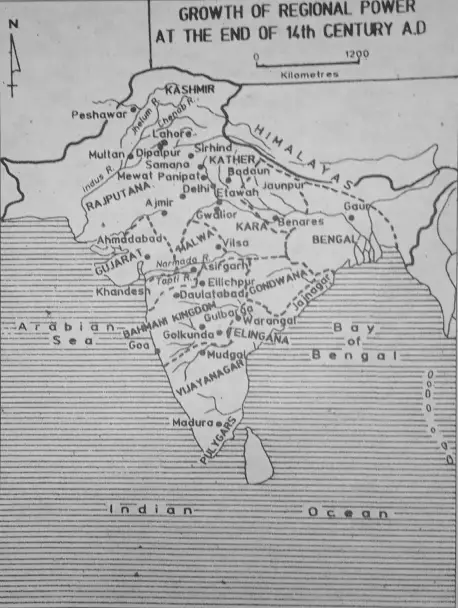
After that, the Brahmin zamindar of Bhaturia and Dinajpur, Ganesh captured the throne of Bengal by taking advantage of the weak descendants. He took the title ‘Danujamardandev’ and ruled from 1414 to 1418 A.D.
After the death of king Ganesh, his son Jadu christened himself into Islam and became known as Jalaluddin Mohammad Shah. He shifted his capital from Pandua to Gour and ruled from 1418 to 1431 A.D.
After him, his son Samsuddin Ahmed became the king (1431-1442 A.D.) After that, Nasiruddin Mahmud (1442-1459 A.D.) re-instituted the Ilyas Shahi dynasty. According to Ferista, he initiated a glorious age.
After Mahmud Rukanuddin Barbak Shah (1474-1481 A.D.) and Jalaluddin Fathshah (1481-1487 A.D.) of the same dynasty ruled. But Jalaluddin Fath tried to diminish the power of the Habsi slaves from Abesinea within the palace.
As a consequence, the Habsi leader Saifuddin Firoz (1487 A.D.) killed Jalaluddin and set up the Habsi dynasty in Bengal. After that Mujaffar, the Habsi Sultan ruled Bengal from 1487 A.D. to 1493 A.D.
This period of 6 years was called the Dark Age of the history of Bengal. At last, his minister Alauddin Hussian Shah killed the barbarous Mujaffar and set up the Hussain dynasty in. Bengal in 1493 A.D.
Hussain Shah (1493-1519 A.D.) shifted his capital from Pandua to Ekdala. He conquered the states like Kamtapur, Tripura, Orissa, etc. Taking advantage of the incapabilities of Nasrat Shah (1519-1532 A.D.)
And Ghiyasuddin Mahmud Shah (1533-1538 A.D.) the Afgan hero Sher Shah captured Gour in 1538 A.D. and the Hussain Shahi dynasty came to an end with this, the Afghan power arose in Bengal.
The flow of cultural evolution in Bengal during the Illyas Shahi and Hussain Shahi regimes: During the Illyas Shahi regime, trade, and commerce, agriculture, art, etc. started developing in Bengal.
Iban Batuta described Bengal in this stage as a ‘State of prosperity’. The boundary of Bengal extended up to Chilka Lake in Orissa, Kathmandu of Nepal, and Kamrup in the East.
According to Dr. Syed Nurul Hussain, Illyas Shah started a golden age in the history of Bengal. Due to patronage from the sultans, the cultural bend in Bengal reached its highest peak and political peace and economic development were also established.
He was respectful to Pirs. Darbesh and Hindus. In his time, Pandua became the main center of art and sculpture. Besides this, in the fields of local art, sculpture, and literature a new era had been evolved.
So the historian Dr. J. N. Sarkar told “A new chapter was opened in the history of Bengal with the accession of Illyas Shah to the throne of Lakhanabati.”
The famous Adina Mosque of Pandua was built in 1368 A.D. in Maldah during the time of Sikandar. Shah. It took 20 long years to build this mosque in imitation of the mosque in Damascus. Adina Mosque was 397 ft. long and 159 ft. wide.
There were 400 pillars. many arches and tombs in that mosque. He built many mansions like ‘Akhi Siraj Uddin’ the Kotowali Darwaja, Mollasimla of Hooghly, ‘Eklakhi Mosque’, and others. Many scholars and pandits were there in his time.
During the regime of Ghiyasuddin Azam Shah, he exchanged letters with the famous poet Hafez of Parasya. Ghiyasuddin built two Madrasas in Mecca and Madina. He spent 12,000 Egyptian gold coins to construct the Madrasa of Mecca.
He also built a restaurant and the Arafah canal. The poet of Mithila (“Maithili Cuckoo”) Vidyapati was his contemporary. The Chinese emperor Yunglo sent his ambassador Ma-Huan to the royal court of Ghiyasuddin.
He also sent Maharatna Dharmaraj a Buddhist monk, to China (1410- 1411 A.D.). Thus the cultural exchanges started between India and China. Barbak Shah was a literature-loving Sultan.
So he took the titles like “Al-Fajil” and “Al- Kamil”. As per his instruction, the pandit of his royal court Brihaspati Misra wrote some notes in Sanskrit on Pada Chandrika and some literature of Kalidasa.
For this, he got the title “Pandit Sarvabhauma.” Barbak Shah gave Maladhar Basu the title “Gunraj Khan”. for writing Sri Krishnavijaya and to his son “Satyaraj Khan”.
As per the instruction of Barbak Khan the poet Krittibas Ojha translated ‘Sri Ram Panchali’ or Ramayana in Bengali. The French scholar of Barbak Khan’s royal court, Ibrahim Kayum Faruki wrote the “Safar Nama”.
Chandidas was the writer of famous Padabali literature in his time. His secularism was a famous event. Among the members of his royal court, Kedar Ray, Mukunda, Gandharva Ray, Ananta Sena, and Kaladhar are worth mentioning.
Sultan gave the title “Subharaj Khan” to Kaladhar. Vijay Gupta wrote the poetic novel Manasha Mangal during the time of Jalaluddin Fath.
Dr. R. C. Majumdar told, “Among the sultans of Bengal Rukanuddin Barbak Shah could claim his utmost supremacy from different angles.”
Culture during Hussain Shahi’s age:
The interests of Alauddin Hussain Shah and Nasrat Shah towards literature and culture had widened a new horizon of advancement. A new chapter was opened in the field of Hindu, and Muslim unity and cultural upsurge.
During the time of Hussain Shah, ‘Nabyanyaya, Sangha’ was established in Nabadwip. Nabadwip became the main center for the study of Sanskrit, Philosophy Nayashastra, Smritishastra, etc.
Due to the appearance of Sri Chaitanya, the Nabavaishnaba religious emotion stirred the fields of religion, society, literature, art, etc.
Centering around Sri Chaitanya deva, many texts like “Chaitanya Bhagabat” by Brindaban Das, Chaitanya Charitamrita by Krishnadas Kaviraj, etc. were written.
Due to the patronages of Hussain Shah, Rup Goswami wrote two texts namely “Lalit Madhav” and “Bidagdhya Madhav” In this time “Srimadbhagabat Gita” was translated in Bengali.
The scholars like Raghunandana, Raghunath, and Basudeva Sarbodhouma appeared in this age. Besides this, Pandit Joshoraj Khan, Srikar Nandy, Sridhar, Kabindra Parameswar, Bipradas Pipilai, etc. took an active role in the cultural upsurge.
Kabindra Parameswar translated Mahabharata in short form in Bengali named “Pandava Vijay Katha” under the instruction of Paragal Khan the ruler of Chattagram.
Srikar Nandy translated the Ashyamedha chapter of Mahabharata in Bengali under the instruction of Chhuti Khan, the son of Paragal Khan. There had been also much improvement of art and sculpture in this time.
The best examples of art and sculpture were “The Dakhil Darwaja”, “Eklakhi tomb”, “Tantipara Mosque”, “The Chota sona Mosque” of Gour made of brick and stone, and “Bara Sona Mosque”, “Kadamrasul palace” of Nasrat Shah (An ornamented black stone situated on a platform with the footprints of Hazrat Mohammad) and other sculptures of Gour and Pandua.
A special study of calligraphy was also there in this age. Impartiality and broadness in the field of religion were especially noted. Prof. M. R. Tarafdar described the broadness of the Hussain Shahis even if they were originally born in foreign countries, was a rare event.
Hindus like Gopinath Basu, Gour Mullik, Rup and Sanatan Goswami, etc. were members of the royal court. At this time, different idols like Satyapir, Manikpir, Gazibaba, Dakshin Ray, Dharma Thakur, Olabibi, Banabibi, Shitala Devi, etc.
Were worshipped equally by Hindus as well as Muslims. Thus the era of Illyas Shahi and Hussain Shahi started a new voyage in the cultural history of Bengal.
During the 15th and 16th centuries, this new trend of cultural as well as overall upsurge brought a brilliant intellect in the life fo Bengalees.
Chapter 4 Delhi Sultanate Turko Afghan Rule Political History Of The Bahmani Kingdom
When Mohammad Bin-Tughluq called Katlu Khan, the ruler of the Deccan back to Delhi, at the inspiration of some nobles and sent Ismail Khan there, the Southern people revolted against him.
Ultimately, Hassan Khan took the charge or rule with the help of a Brahmin astrologer. Out of gratitude to that Gangu Brahmin, Hassan book the title of Gangu Bahman. He took the title of Abul Muzaffar Alauddin Bahman Shah and set up the independent Bahamani kingdom (1347 A.D.).
He regarded himself as the successor of the brave Bahman king of Persia and his empire was known as the Bahmani state. For proper administration, Abul Bahman Shah divided his kingdom into four provinces-Daulatabad, Gulbarga, Bidar, and Berar.
He conquered Goa, Davel, Telangana, etc., and extended the Bahmani empire from Penganga in the North to the Krishna in the South and Vengir in Hyderabad in the East, and Daulatabad in the West.
18 rulers sat on the throne of the Bahmani kingdom. After the death of Alauddin Bahman Shah in 1358 A.D., his son Mohammad shah I (1358-1377 A.D.) was involved in a war with Warrangal and Vijayanagar during most of his rule.
After his death, Mujahid Shah (1377- 1397 A. D.). spent more time in art and literature than in warfare. The greatest of the Bahmani kings was Firoz Shah (1397-1422 A.D.). He fought against Vijayanagar thrice and was defeated only in the last one.
He won in the other two. He was not only a fighter but a patron of culture too. He had ordered the building of many mosques and palaces. After that Ahmad shah (1422- 1436 A.D.) transferred his capital from Gulbarga to Bidar.
Then Alauddin Ahmad Shah (1436- 1458 A.D.) Humayun Shah (1458-1461 A.D.) and Nizam Shah (1461-1463 A.D.) ruled one after another. Due to the worthlessness of Mohammad Shah III (1463-1482) his able chief minister.
Mahmud Gawan took the charge of the Bahmani state as the leader of the foreign, nobles. According to Ferishta, Mahmud Gawan wrote the book-Diwane, Amar.
He had qualities like military tactics, administrative efficiency, moral ethics, and respect for art and culture. The jealous southern nobles brought the false charge of sedition and Mohammad Shah III killed him by poison and alcohol.
The Russian traveler Authonosius Nikitin was moved by the role of Gawan during his visit to the Bahmani state during the rule of Mohammad III, Taylor argued that at the death of Gawan, the unity and solidarity of the Bahmani state was destroyed.
After the death of Gawan Mohammad III realized his mistakes and died within one year out of sorrow (1482 A.D.). After his death, the political disorder was started everywhere. The provincial governors became independent one by one.
During this period of decline, king Mohammad took the charge of the state. During the rule of Mohammad Shah (1482-1518 A.D.) the Bahmani kingdom was divided into four parts. The last emperor Sultan Kalim-Ullah.
started to rule in Bidar when Amir Barid, the son of minister Kasim Barid started to rebel, the Sultan fled away to Gujarat out of fear. The Bahmani kingdom lost its existence with his death in 1527 A.D.
Five independent Muslim states emerged on the devastation of the Bahmani state. Local states evolved much before the death of the last Sultan. In 1484 A.D. Imal Shal founded the Imad Shah dynasty in Berar.
In 1490 A.D., Adil Shah founded the Adil Shahi dynasty in Bijapur. In 1490 A.D. Ahmad Nizam Shah established the Nizam Shahi dynasty in 1527 A.D. Arim Ali Barid set up the Barid Shahi dynasty in Bidar.
Chapter 4 Delhi Sultanate Turko Afghan Rule The Political History Of Vijaynagar
Taking advantage of the political misrule and rebellious during the reign of Mohammad Bin Tughluq Harihar and Bukka, the two sons of the five of certain sangoma of the Yadav groups founded the independent Vijayanagar kingdom at the south of river Tungabhadra.
R. Sewell has said in his “A Forgotten Empire” that when Juna Khan, son of Ghiyasuddin Tughluq of Delhi destroyed the state of Warangal in the south in 1324 A.D. the five sons of Sangama fled away and set up the Vijayanagar state.
Another group of historians said that the Hoysal king Big Ballala III built many forts on the south banks of the river Tungabhadra to protect it himself from Muslim invasion and appointed Harihar, son of Cangama to that place later on, taking advantage of political misrule, Harihar and Bukka set up an independent Vijayanagar state.
From this period, the independent Vijayanagar staté enlisted for 300 years. Four dynasties ruled in Vijayanagar. Those were
1. The Sangama dynasty (1336-1485 A.D.) Saluva dynasty (1486-1505 A.D.) Tuluva dynasty (1505-1565 A.D.) and Arbidu dynasty (1570- 1678 A.D.); The Vijayanagar state declined in 1678 A.D.
The Sangama rulers ruled for 150 years. The Vijayanagar state was extended up to Trichinapalli during Harihar and Bukka. At the reign of Bukka, the struggle with the Bahmani kingdom began. He sent ambassadors to China.
Two of his ministers, pandit Madhab Bidyaratna and his brother the commentator of the Vedas Sayanacharya were scholars in various fields. Bukka’s son Harihar II (1379-1404 A.D.) conquered Kanchi, Mysore, Chingelput, Trichinapalli, etc.
And look at the titles of ‘Maharajadhiraj’ and ‘Rajparameswar’. His son Devaray I (1404- 1422) was defeated by the Bahmani Sultan Firoz Shah and gave his daughter in marriage with the later.
To challenge this insult he defeated the Bahmani Sultan in a battle of 1419 A.D. The greatest king of the Sangama dynasty was his son Devaray II (1422-1446 A.D.) He conquered Orissa, and Andhra and extended his empire up to Ceylon.
He appointed many Muslim archers in his army. Still, he was defeated in the battle with the Bahmanis and had to sign an insulting treaty.
The Persian scholar Abdur Razzak and the Italian traveler Niccolo Konti had written about the cultural development, Hindu-Muslim unity, and economic prosperity of his period.
The last ruler of the Sangama dynasty, Mallikarjun sat on the throne in 1446 A.D. He saved the Vijayanagar empire from the invasions of king Kapilendra of Orissa and the Bahmani Sultans, but political anarchy was created during his inefficient son Birupaksha.
At this opportunity, Narsimha Saluva, the ruler of Chandragari had overthrown him and took the charge of the Vijayanagar empire. Narasimha Saluva, the ruler of the Saluvas saved the Vijayanagar state from sure destruction.
He consolidated his empire by establishing peace and discipline. His inefficient son Immadi Narasimha could not rule properly and his commander-in-chief Naras Nayak became the actual ruler of Vijayanagar.
In spite of this opportunity, he did not become the ruler of the state. After his death, his son Bir Narasimha took the throne fo Vijayanagar in ‘1505 A.D. The Saluva rulers ruled in Vijayanagar from 1486 A.D. to 1505 A.D. for only 19 years.
The son of Naras Nayak, Bir Narasimha was the founder of the Tuluva dynasty (1505 A.D.). This dynasty ruled in Vijayanagar for about 65 years (1505-1570 A.D.). The greatest of the Tuluva rulers was Krishnadeva Ray (1509-30 A.D.)
Who was the younger brother of Bir Narasimha? The Portuguese traveler Paes wrote about his rule of twenty-one years that “He is the most learned and perfect king that could possibly be… a great ruler and a man of much justice… gallant and perfect”.
Krishnadeva Ray first forced to nobles to obey him. Then he defeated the Bahmani Sultan Mahmud Shah in the battle of Kovelakonda in 1512 A.D. and occupied the “Raichur- Doab”. He also occupied the two forts of Sivasamudram and Srirangapattanam.
In 1513 A.D. he defeated Gajapatiraj and Prataprudra of Orissa and occupied Udaigiri and Kourdabidu by a treaty of 1518 A.D., he married the daughter of Gajapati. He defeated.
Kuli Kutab, the ruler of Golconda and defended the invasion of Ismail Adit Khan, the Sultan of Bijapur successfully in 1520 A.D. He destroyed the fort of Gulbarga of Bijapur at this time.
His empire included Konkan in the West, Vishakhapatnam in the East, Kanyakumari in the South, and many other islands of the Indian Ocean. In West India, the Portuguese ruler of Goa, Albukark built up the fort of Bhatkal by his order.
Raja Krishnadeva Ray was not only a soldier, he was also a patron of art and literature. He had 8 eminent scholars in his court who were known as the Astadiggajas.
The Portuguese traveler Domingos Paes praised him and wrote that Krishnadeva was a great ruler and impartial judge, but sometimes he got very angry and affectionate to his subjects.
K.K. Dutta has written about him “The reign of Krishnadeva Ray not only marked the climax in the territorial expansion of the Vijayanagar empire but was also remarkable for the encouragement and development of art and letters.
An Advanced History of India p. 370. After the death of Krishnadeva Ray in 1530 A.D. his younger brother Achyuta Ray sat on the throne of Vijayanagar (1530 A.D.-1542 A.D.) Ultimately, his nephew Sadasiv Ray (1542- 1570 A.D.) sat on the throne.
But due to his inefficiency, the minister Ram Ray became the proper ruler. He was a great diplomat like Bismarck. He took advantage of the internal quarrels of the five Muslim states of the Bahmani kingdom (1564 A.D.)
And sometimes took this side or that. Realizing this mistake, the Muslim, states fought unified against Vijayanagar in the battle of Talikota in 1565 A.D. Ram Ray was killed and defeated in this battle.
The Muslim rulers went on looting and killing for 5. months. The battle of Talikota destroyed the much-desired wish to establish a Hindu state in the South.
Dr. R.C. Majumdar had described ‘the battle of Talikota (1565) as a specially significant one’. Though Ram Ray was killed, Sadashiv Ray continued to rule after the battle.
Tirumal, the brother of Ram Ray defeated Sadasiv and set up the Aravidu rule in Pengonda. He was confined to survive between (1570-1586 A.D.) the last powerful ruler of this dynasty was Benkat II (1586-1644 A.D.).
He did the only important work of transferring his capital to Chandragiri. The last ruler of this dynasty Ranga III had to face internal trouble and due to the advancing policy of Bijapur and Golkunda, states like Madura, Tanjore, Bednaur, and Srirangapattam became independent and the Vijayanagar empire lost its last existence.


